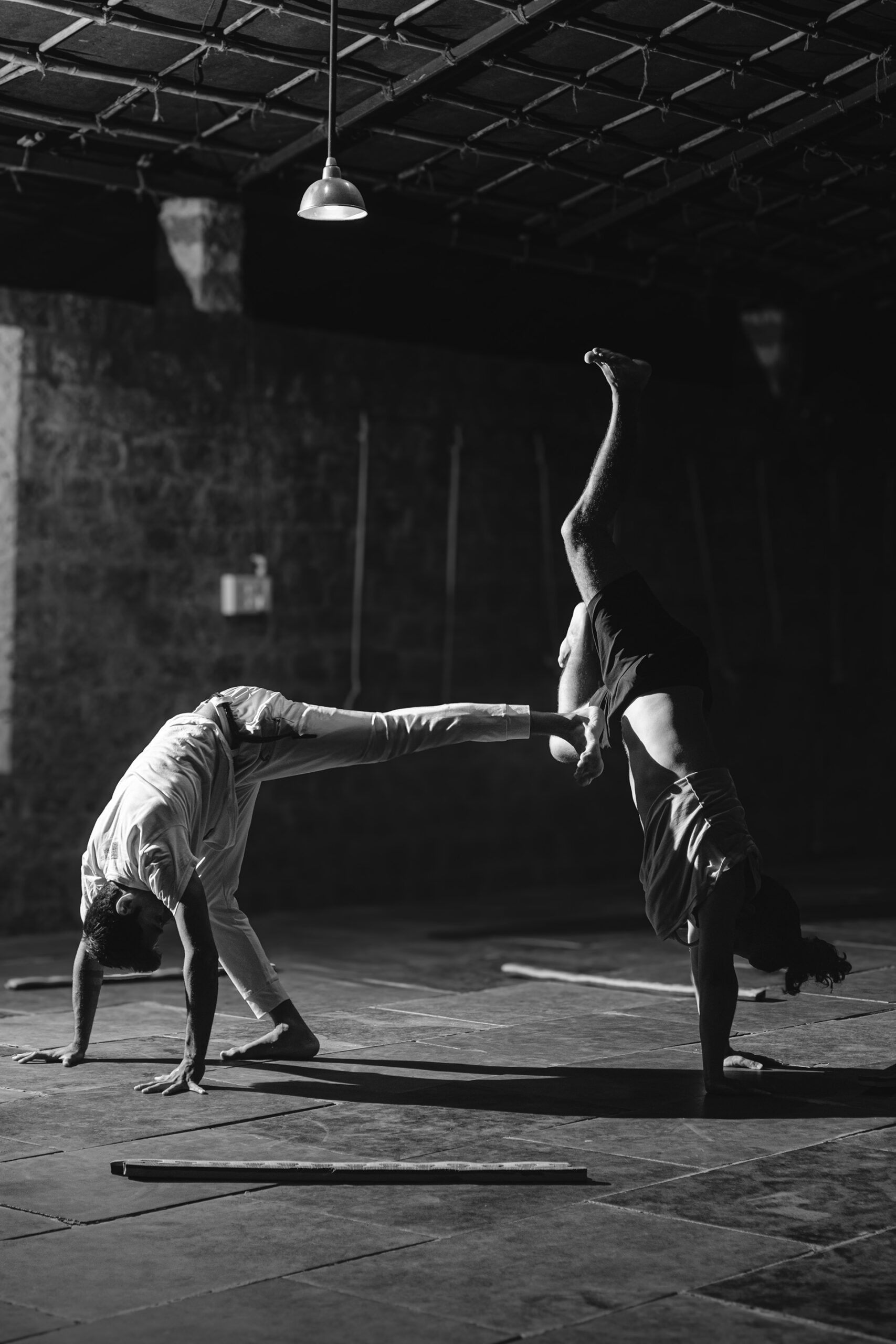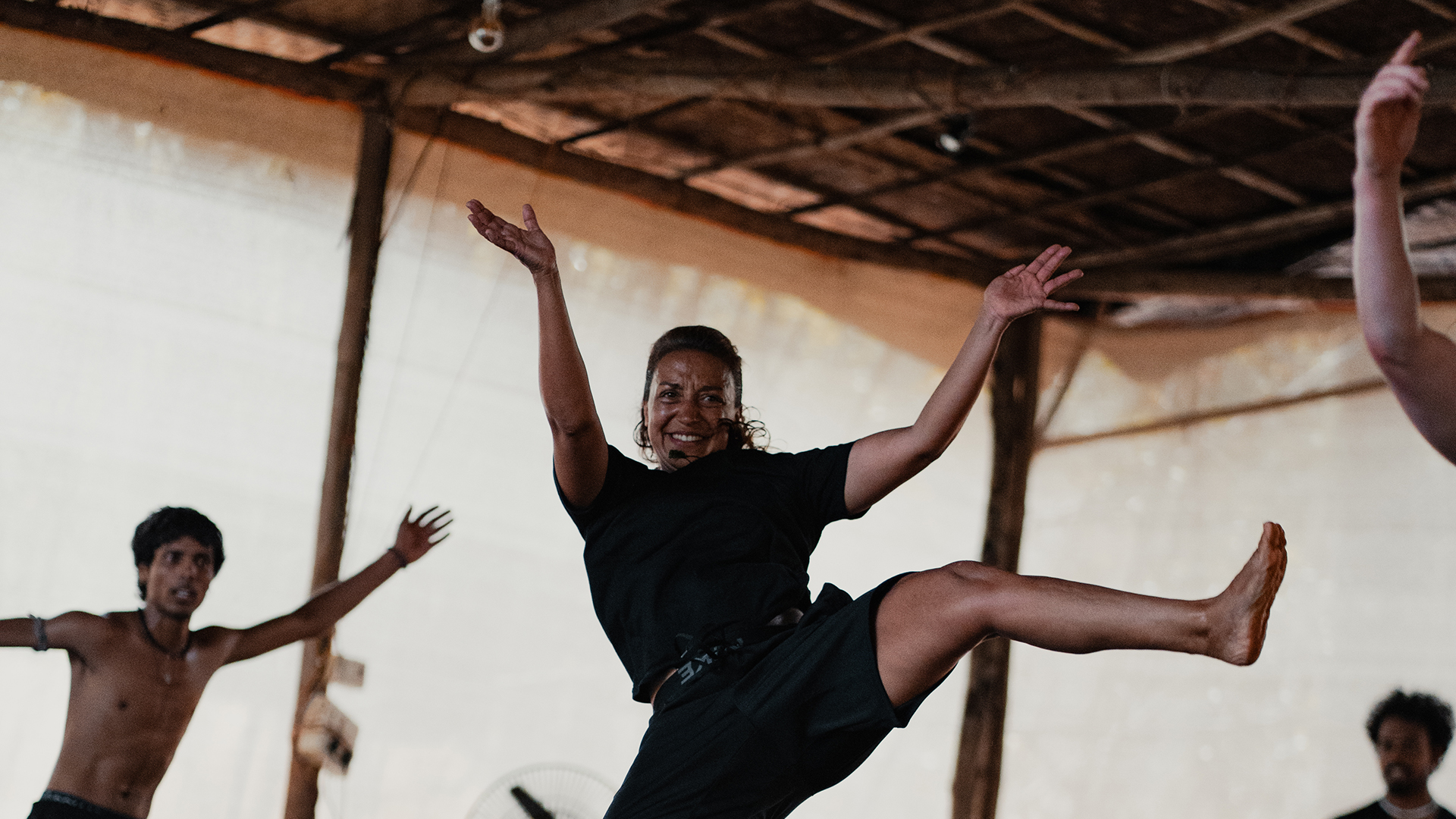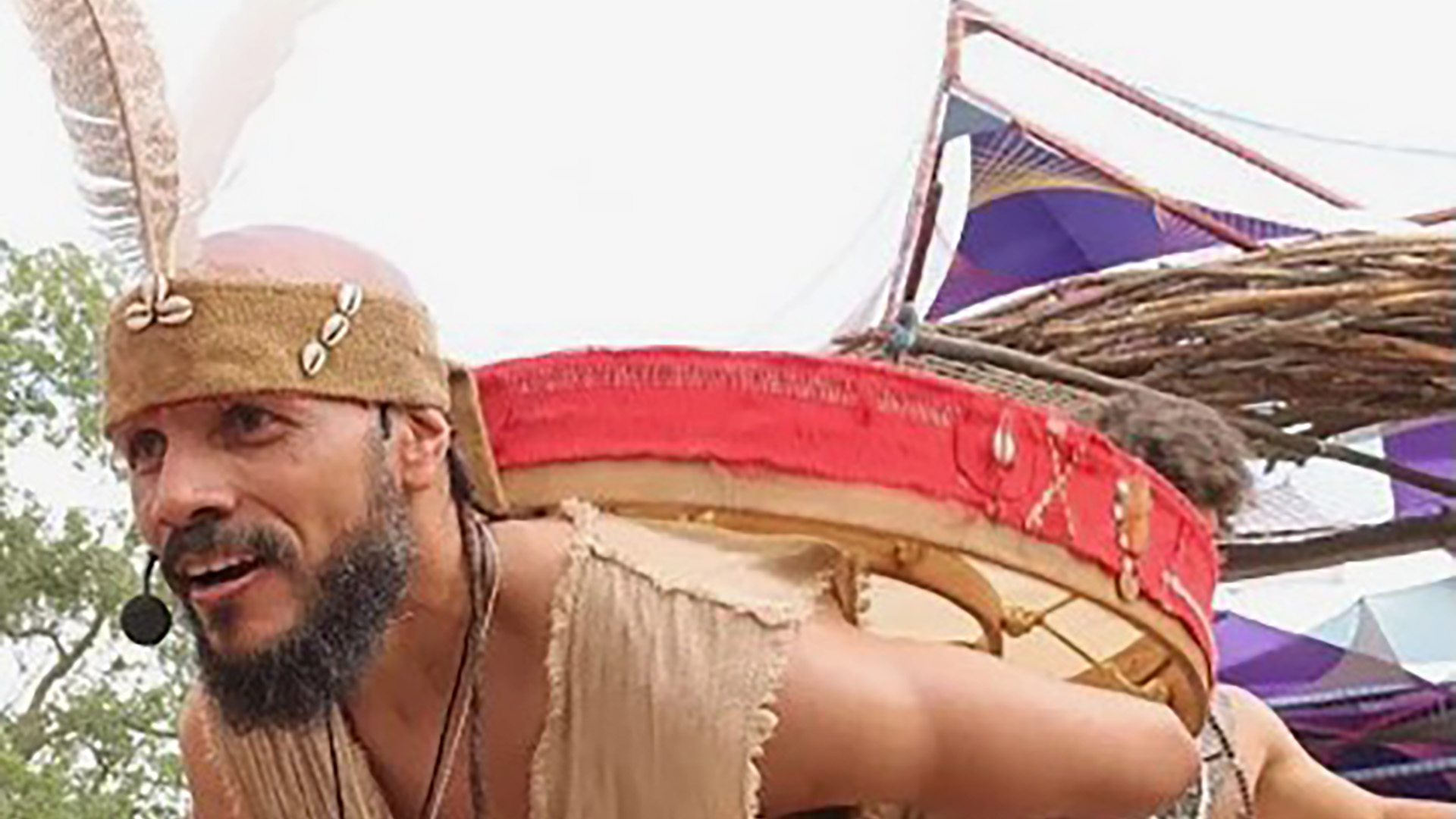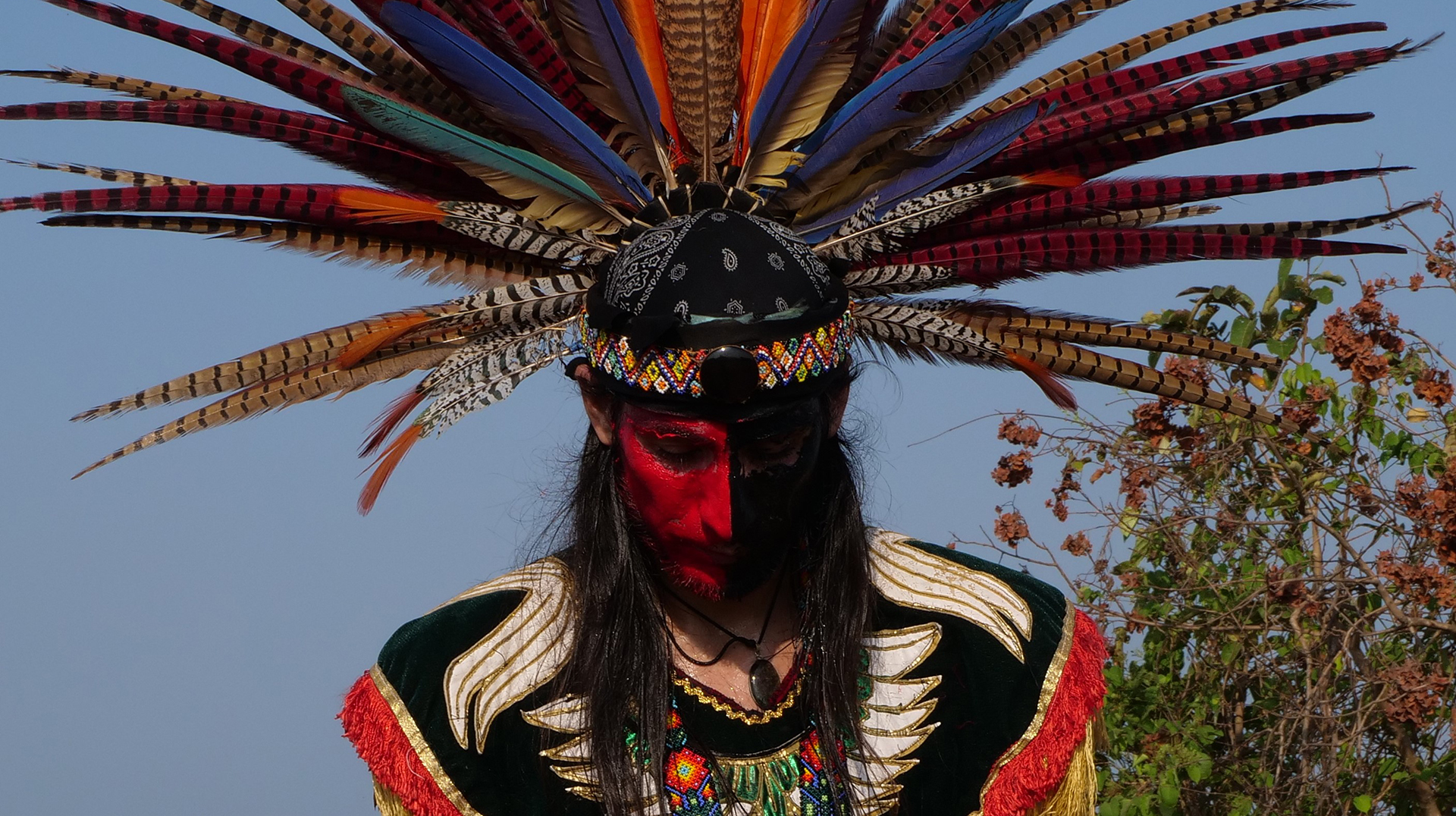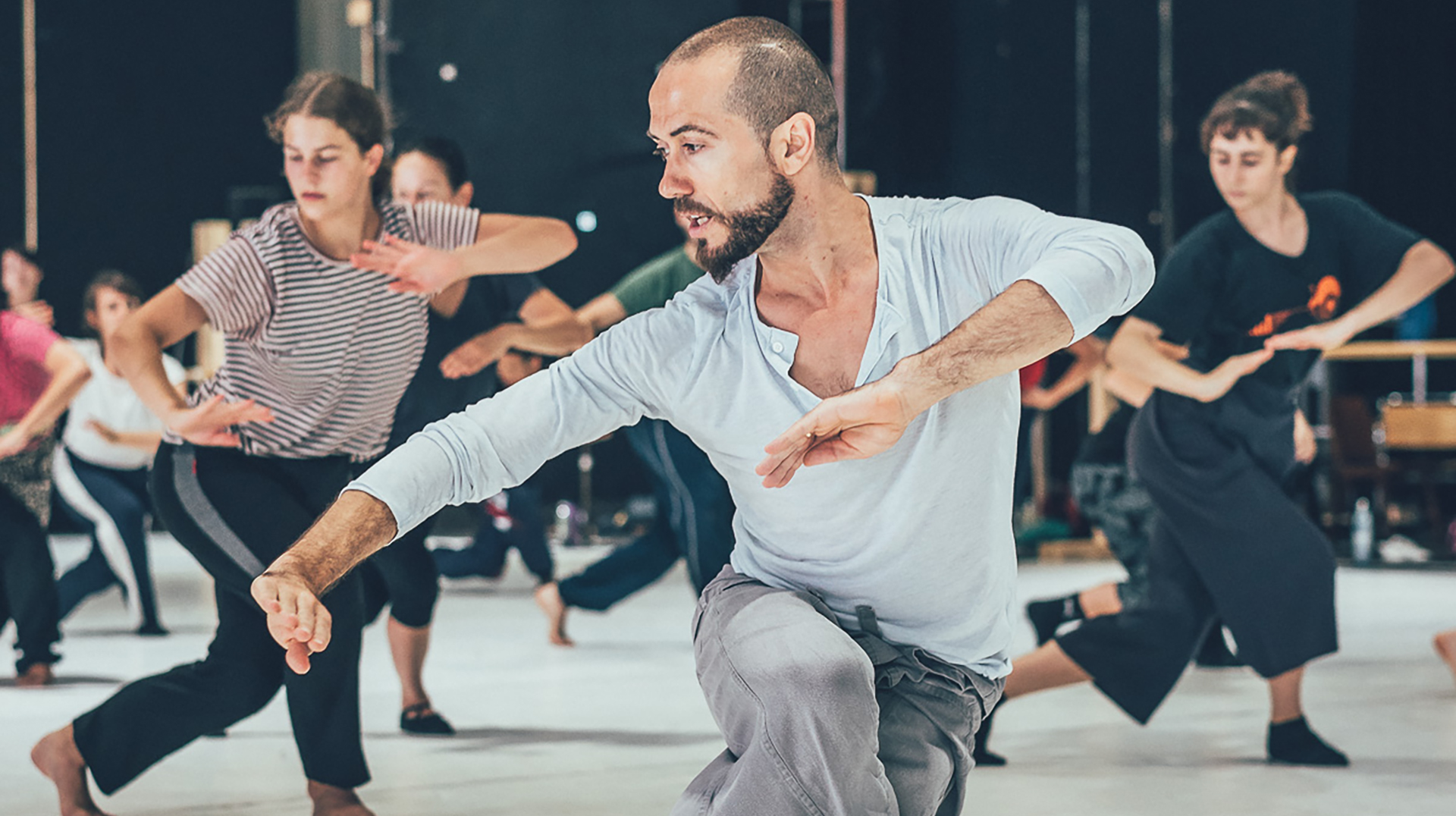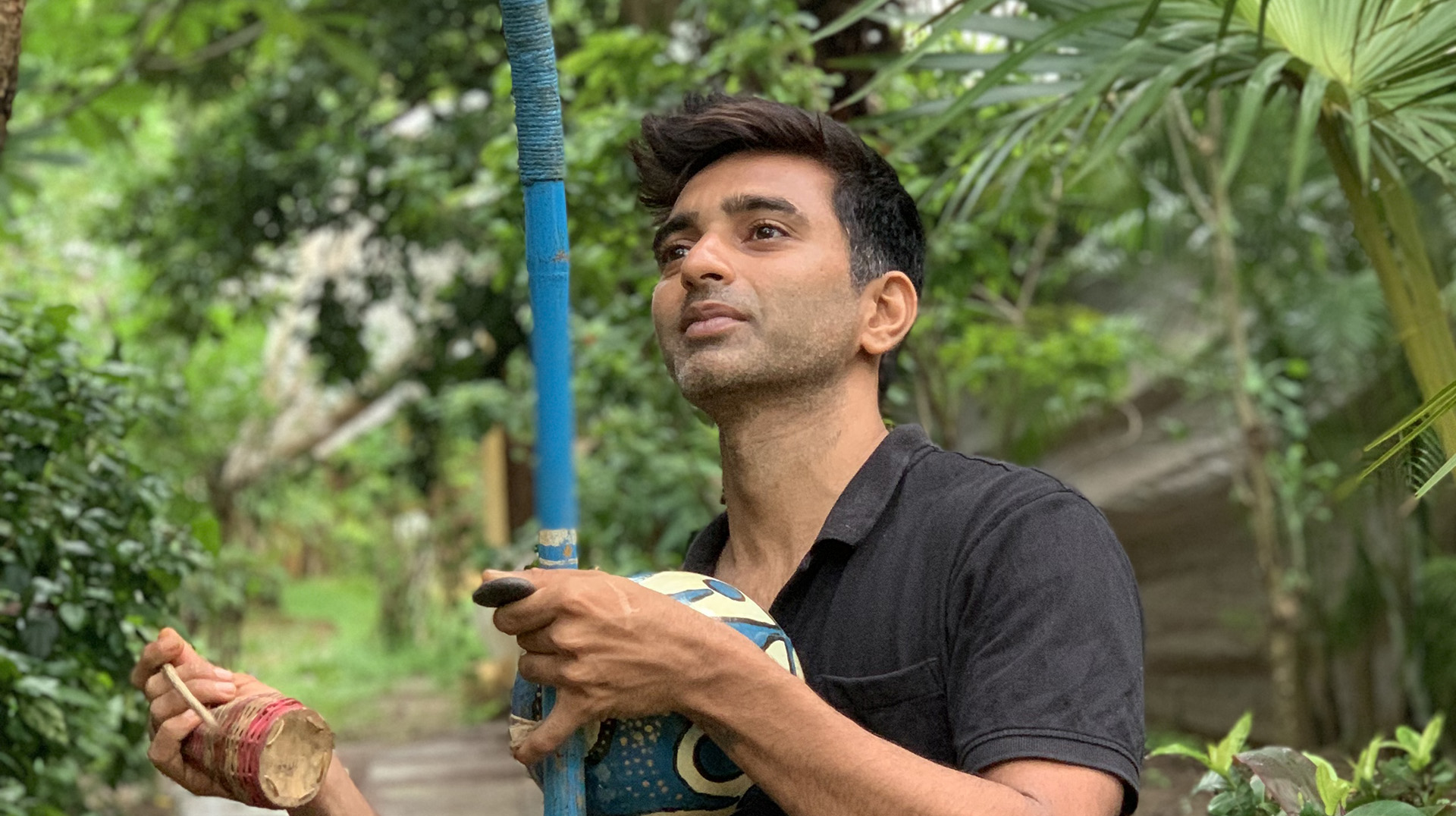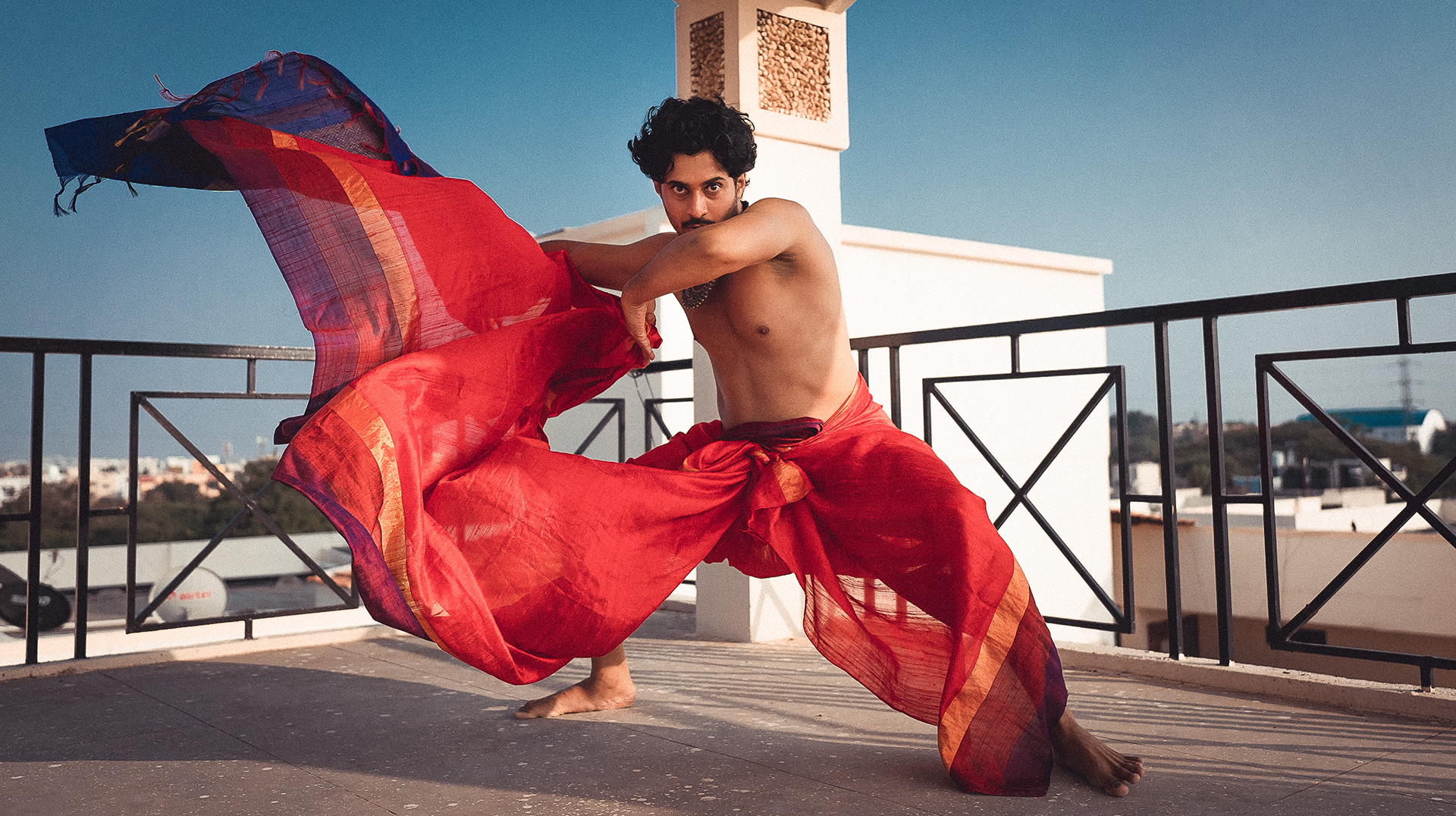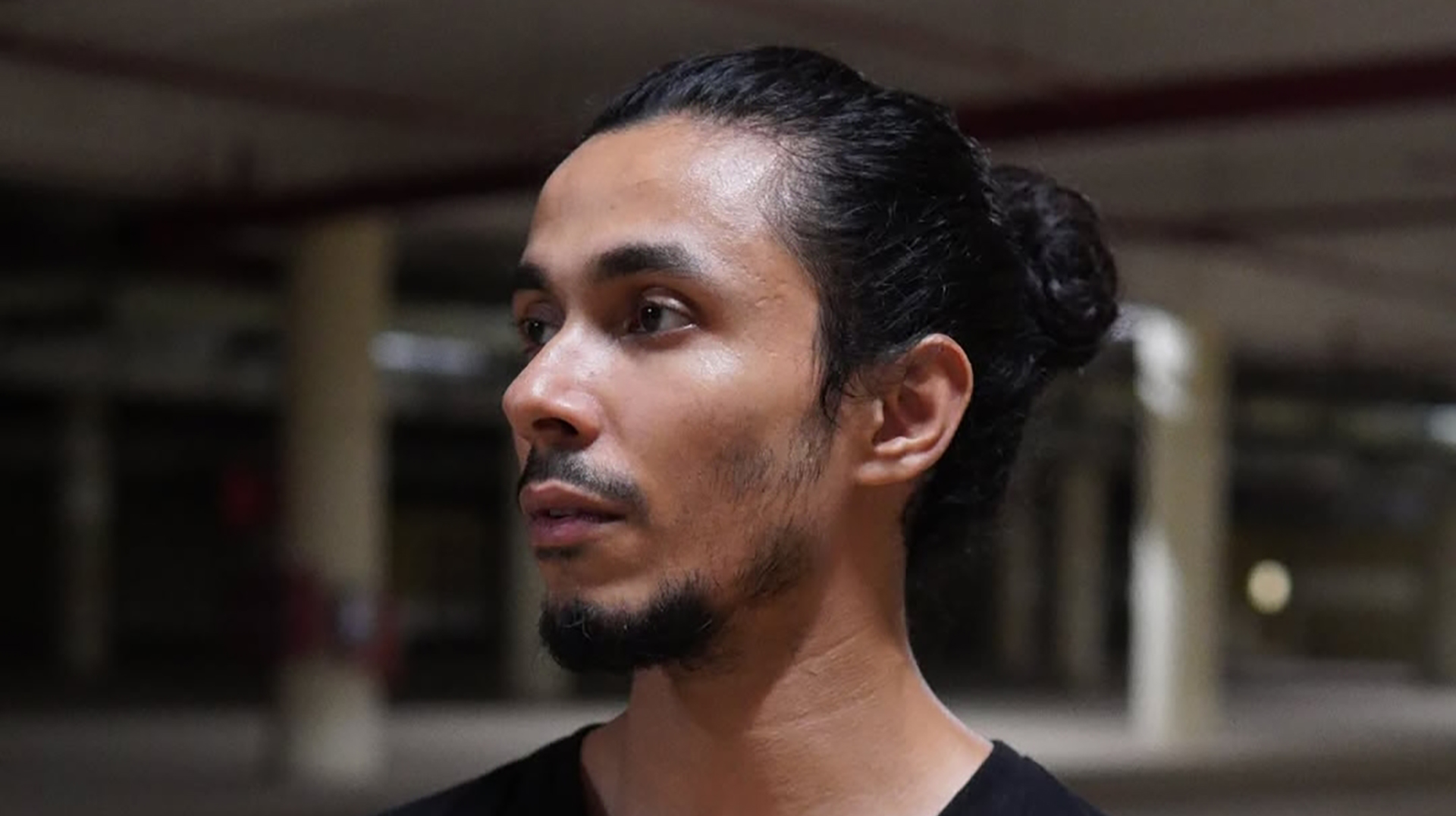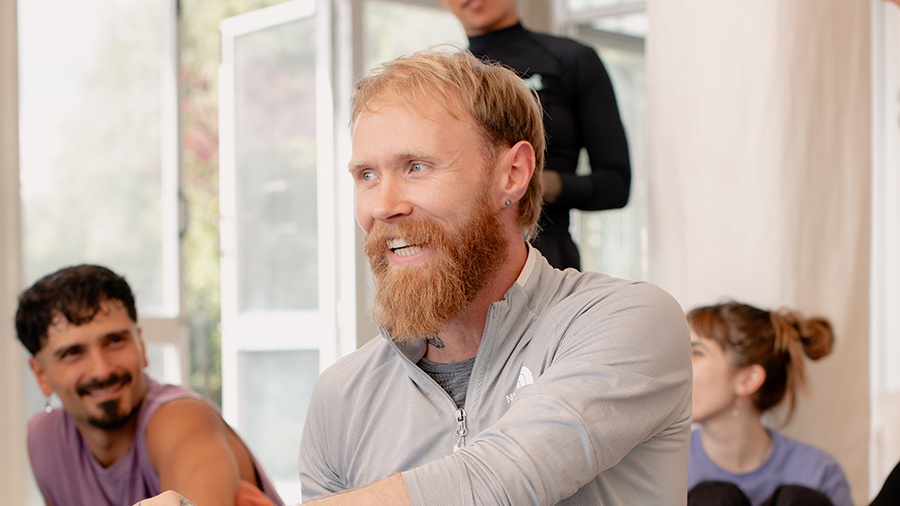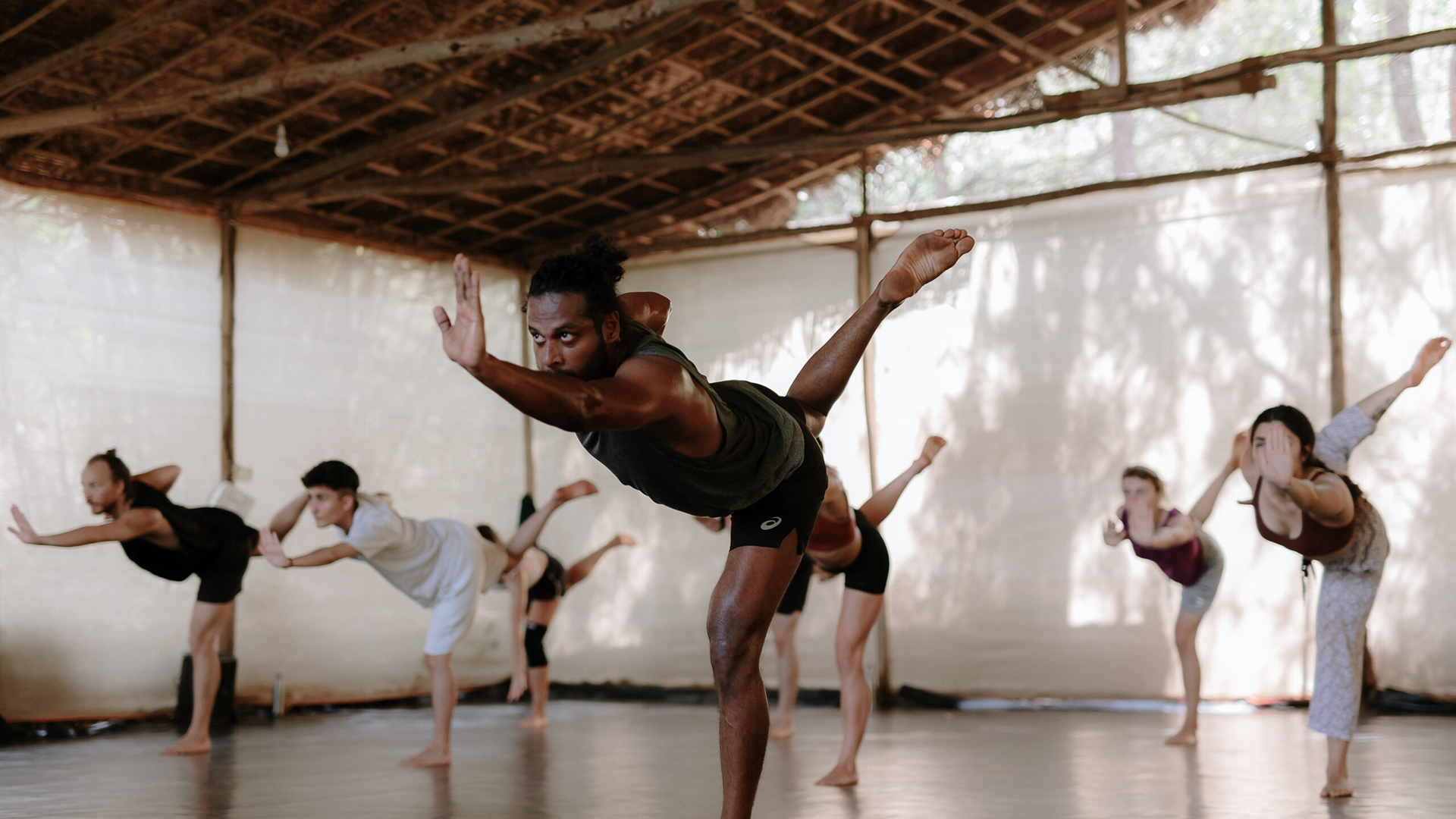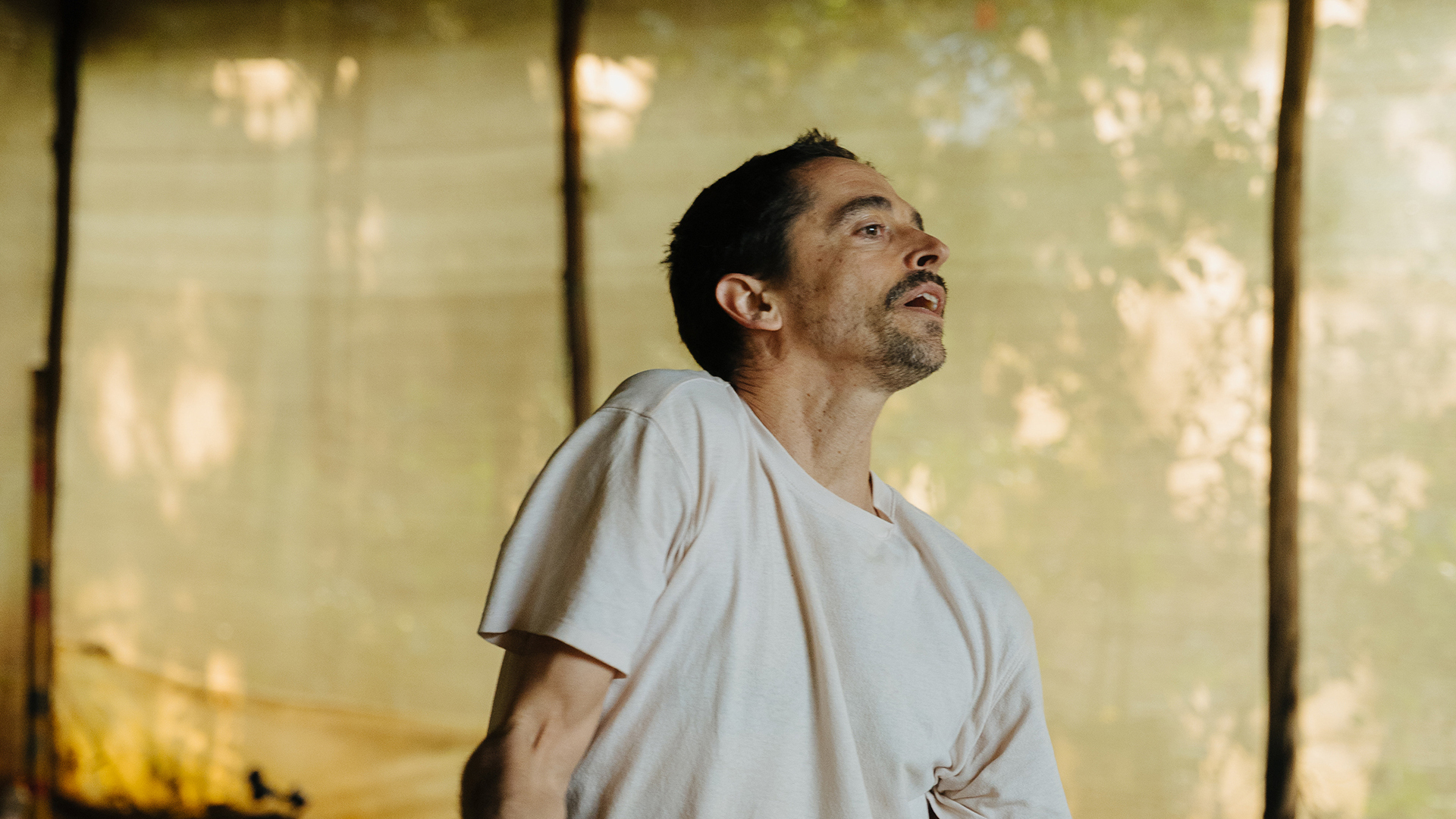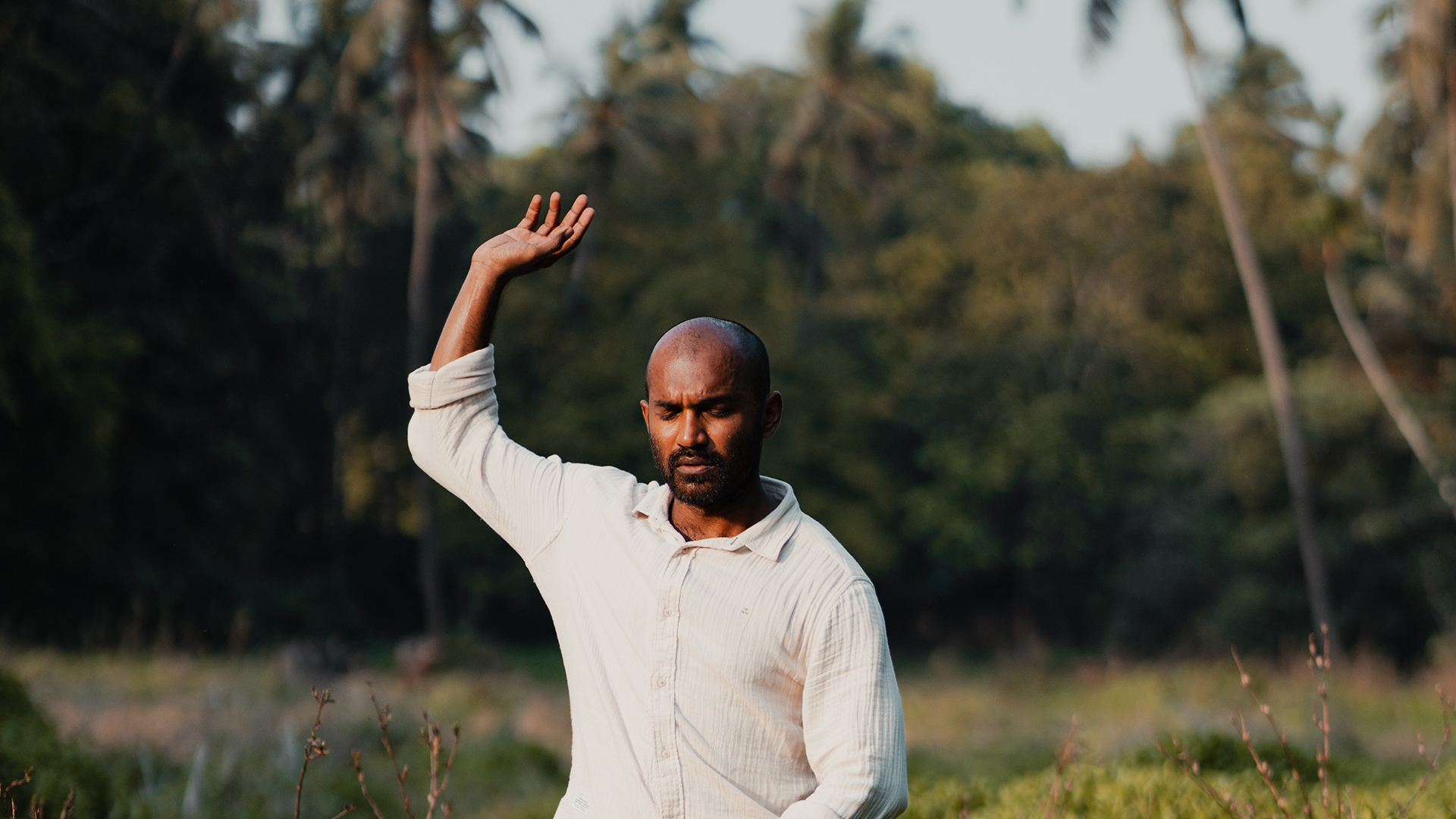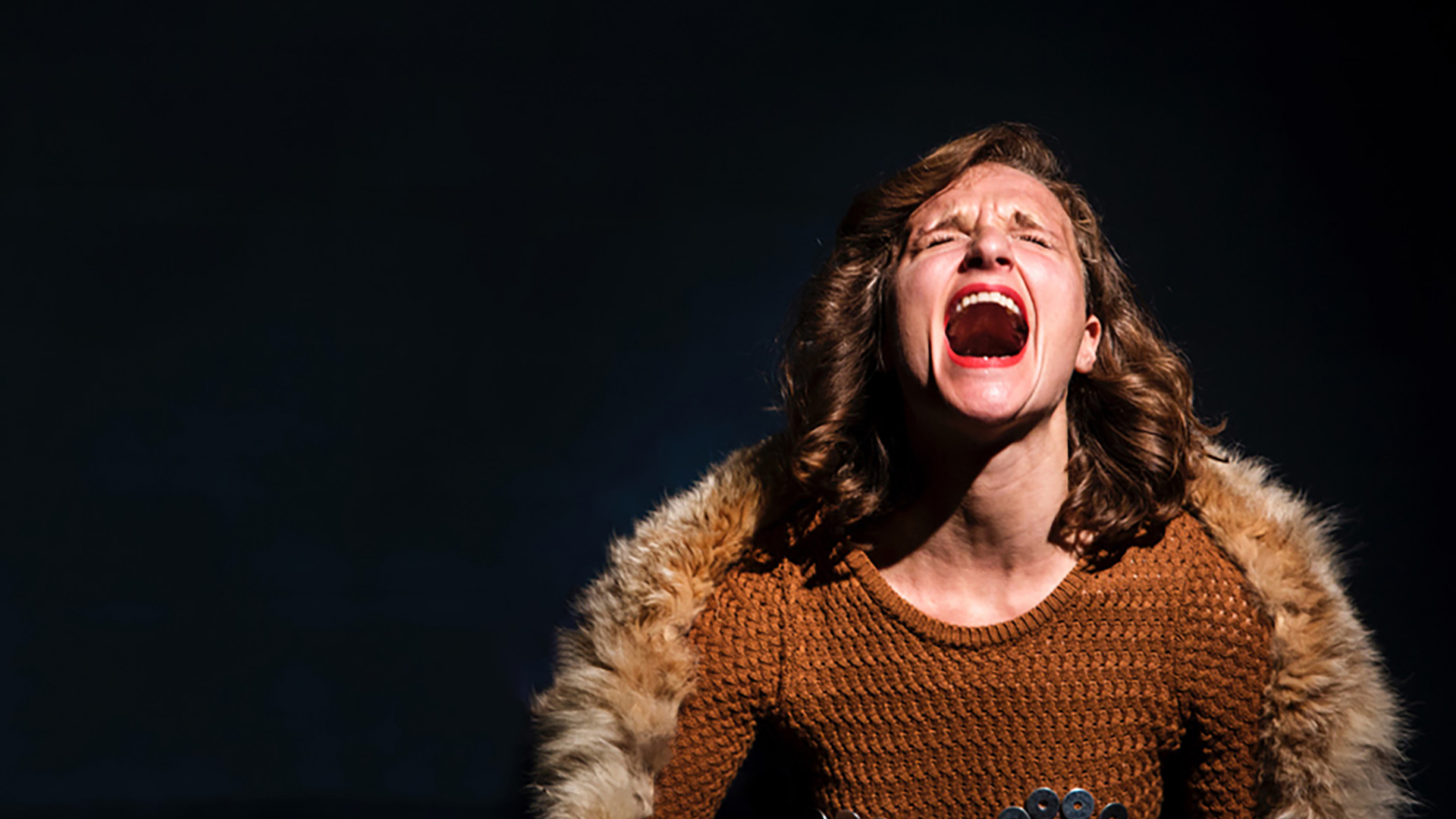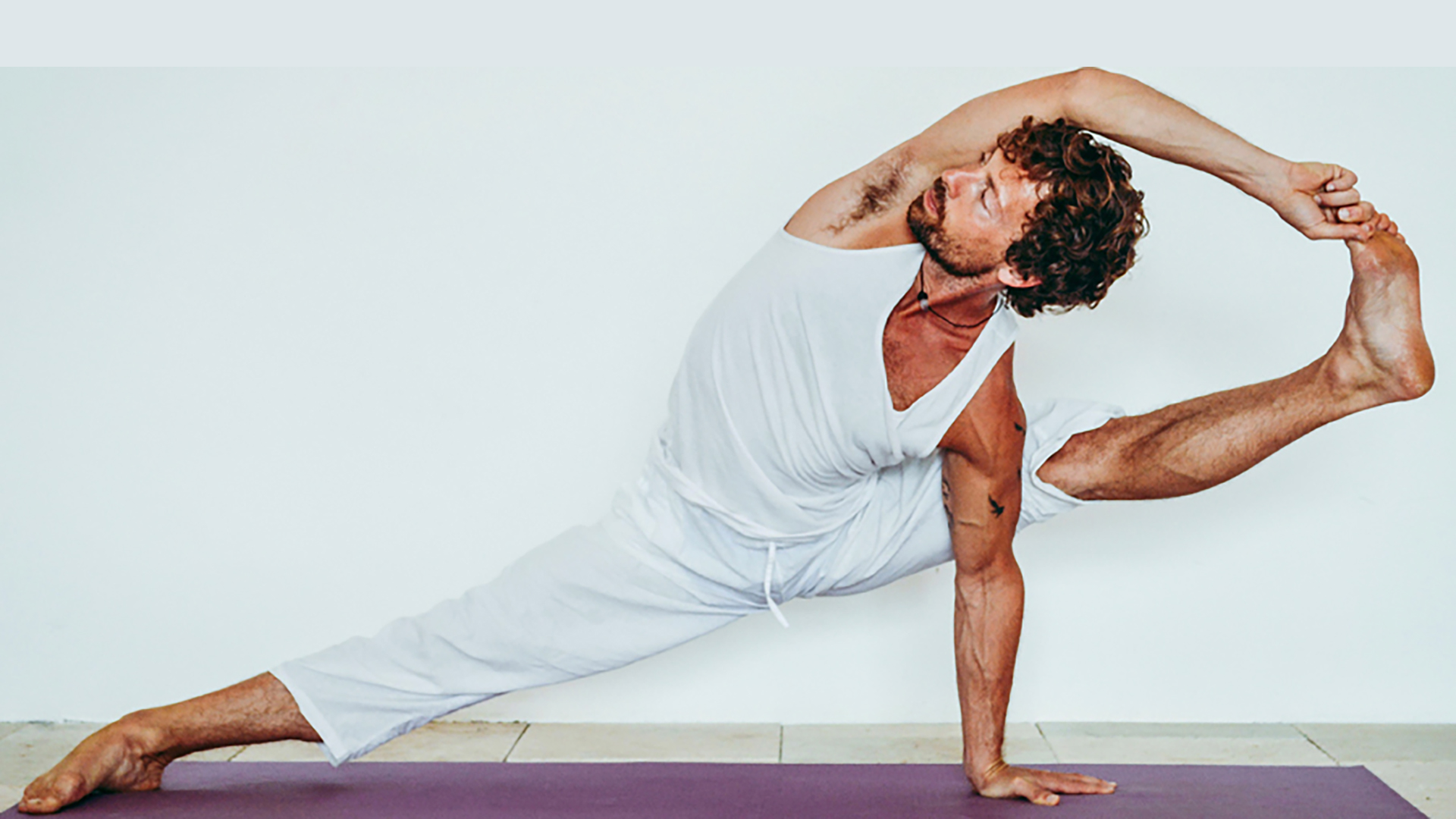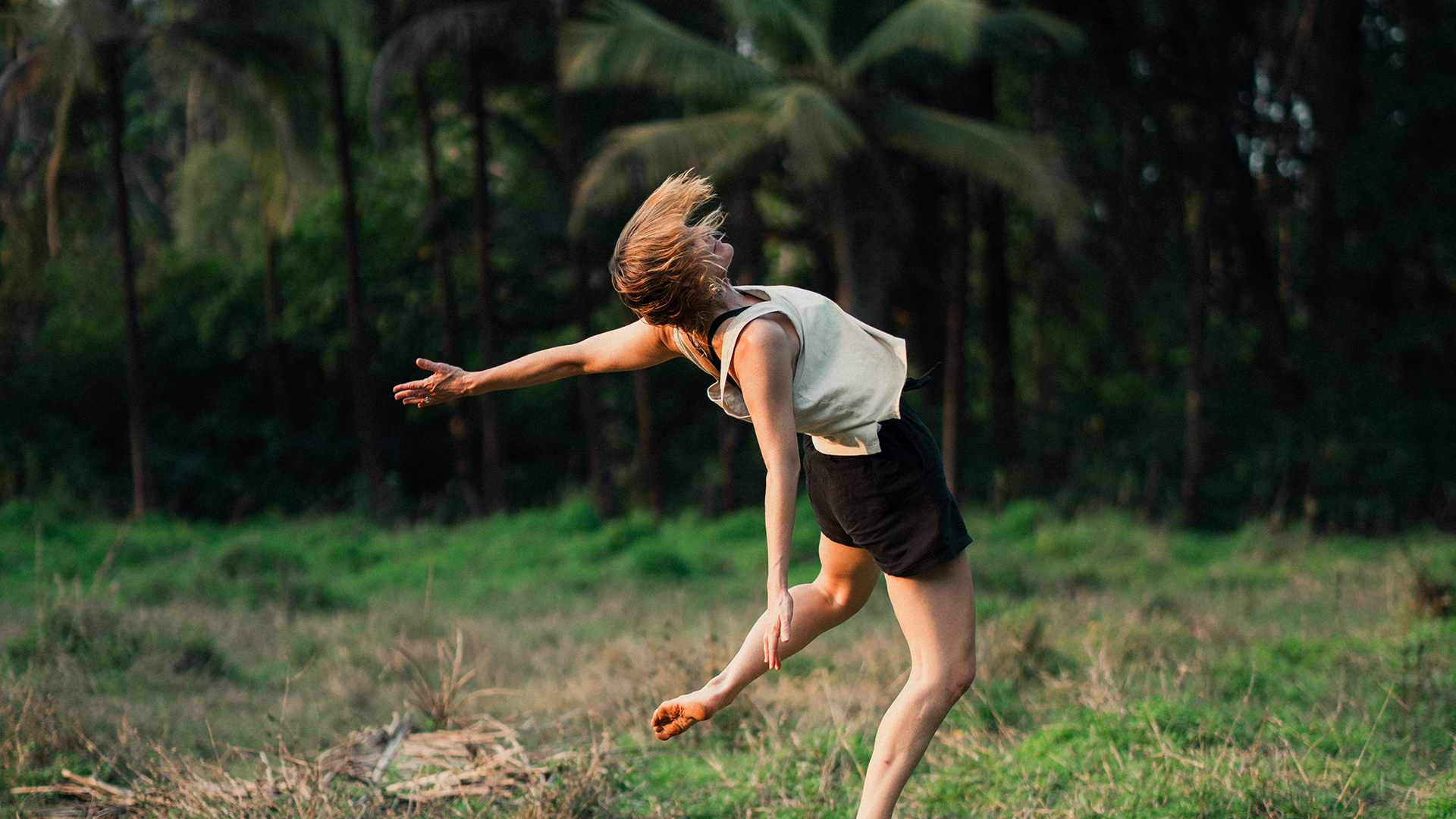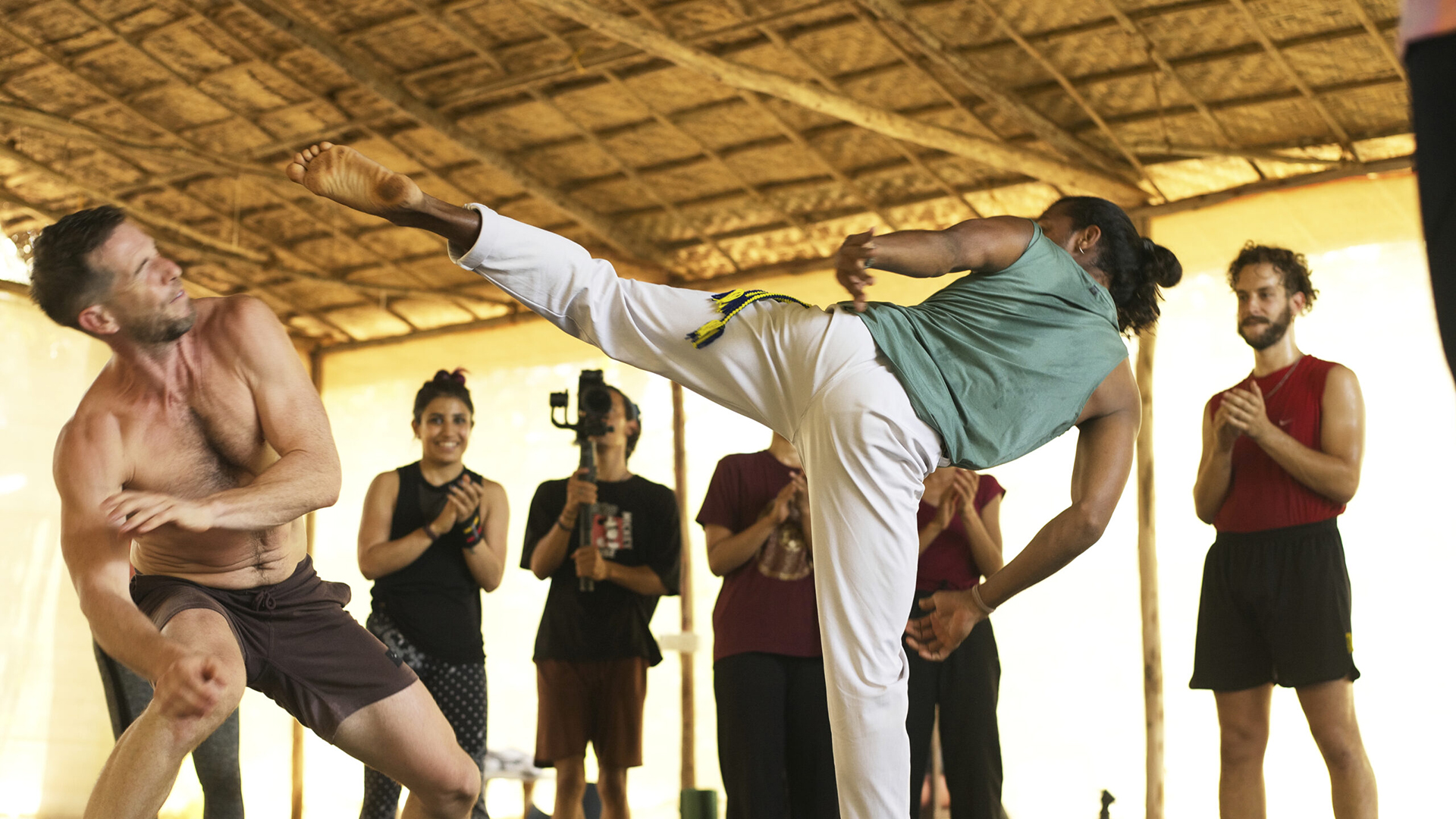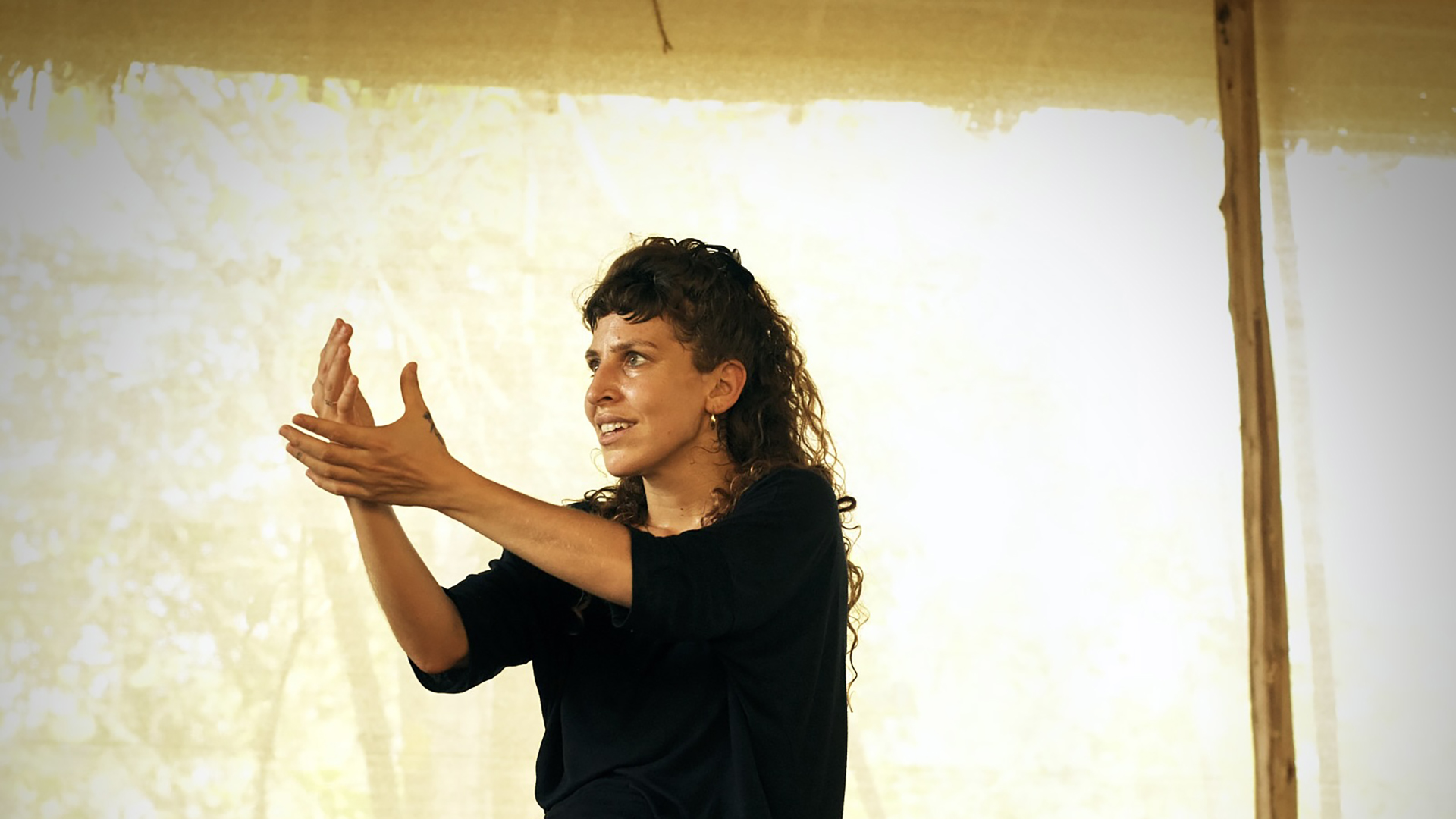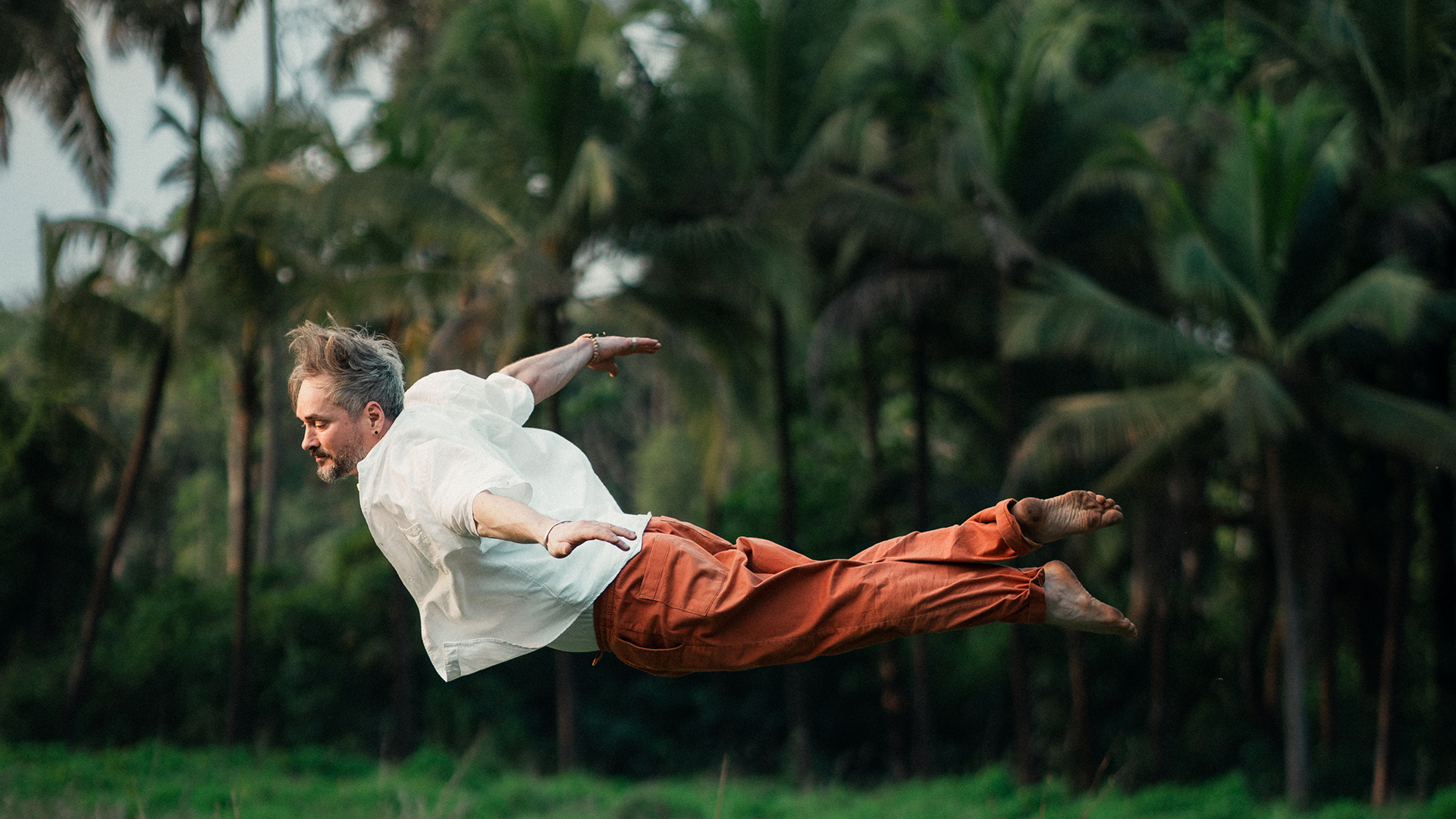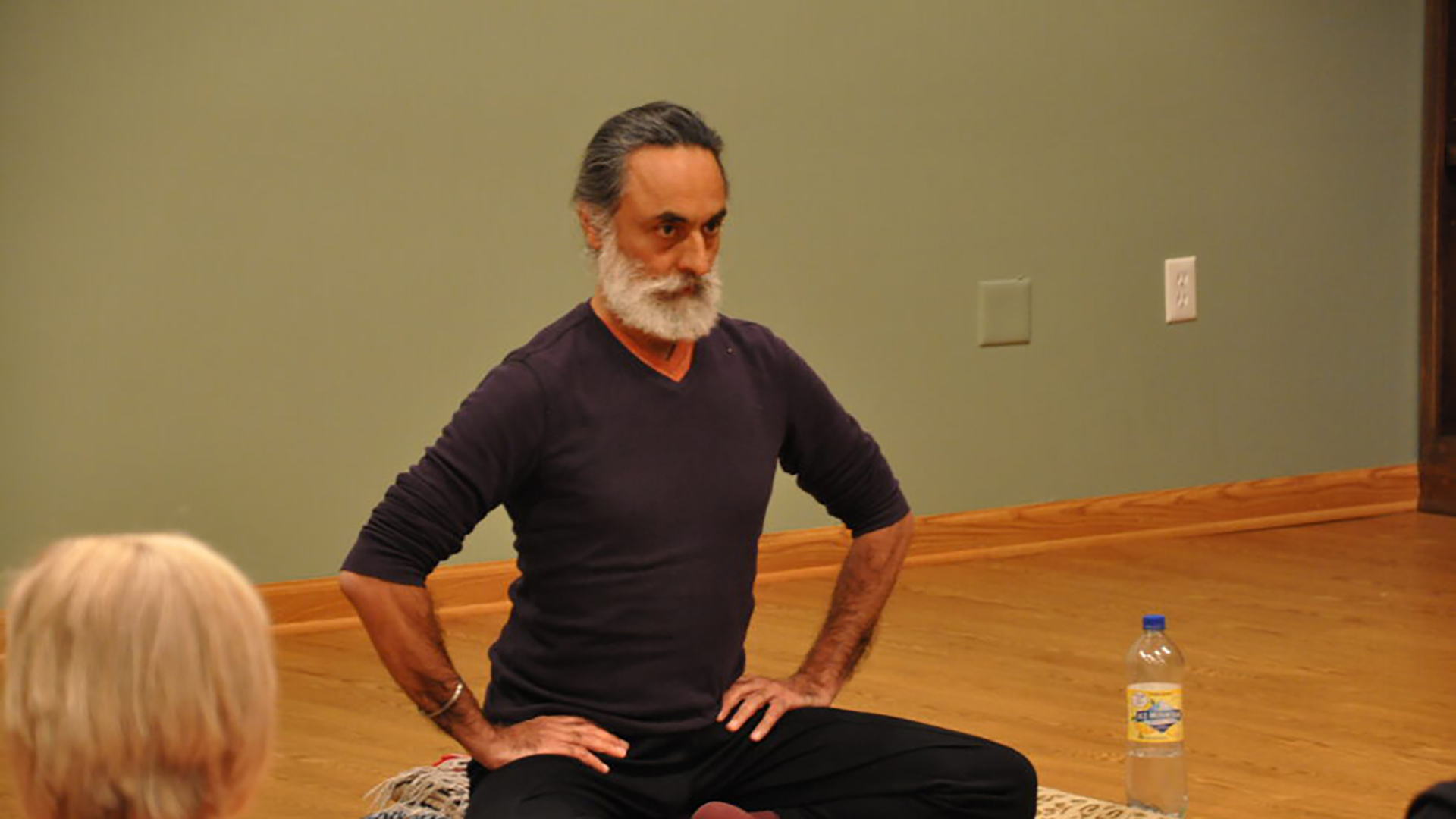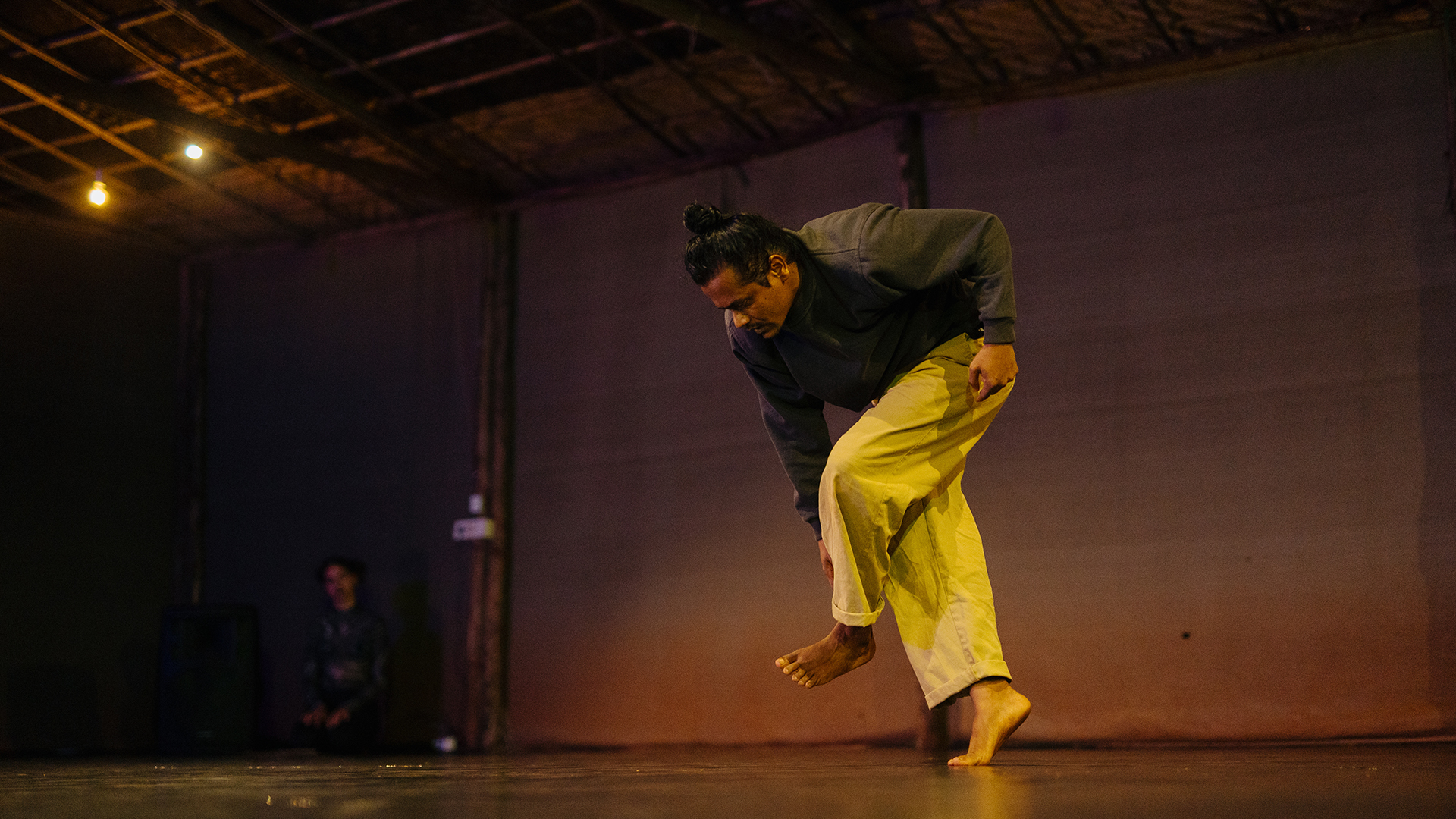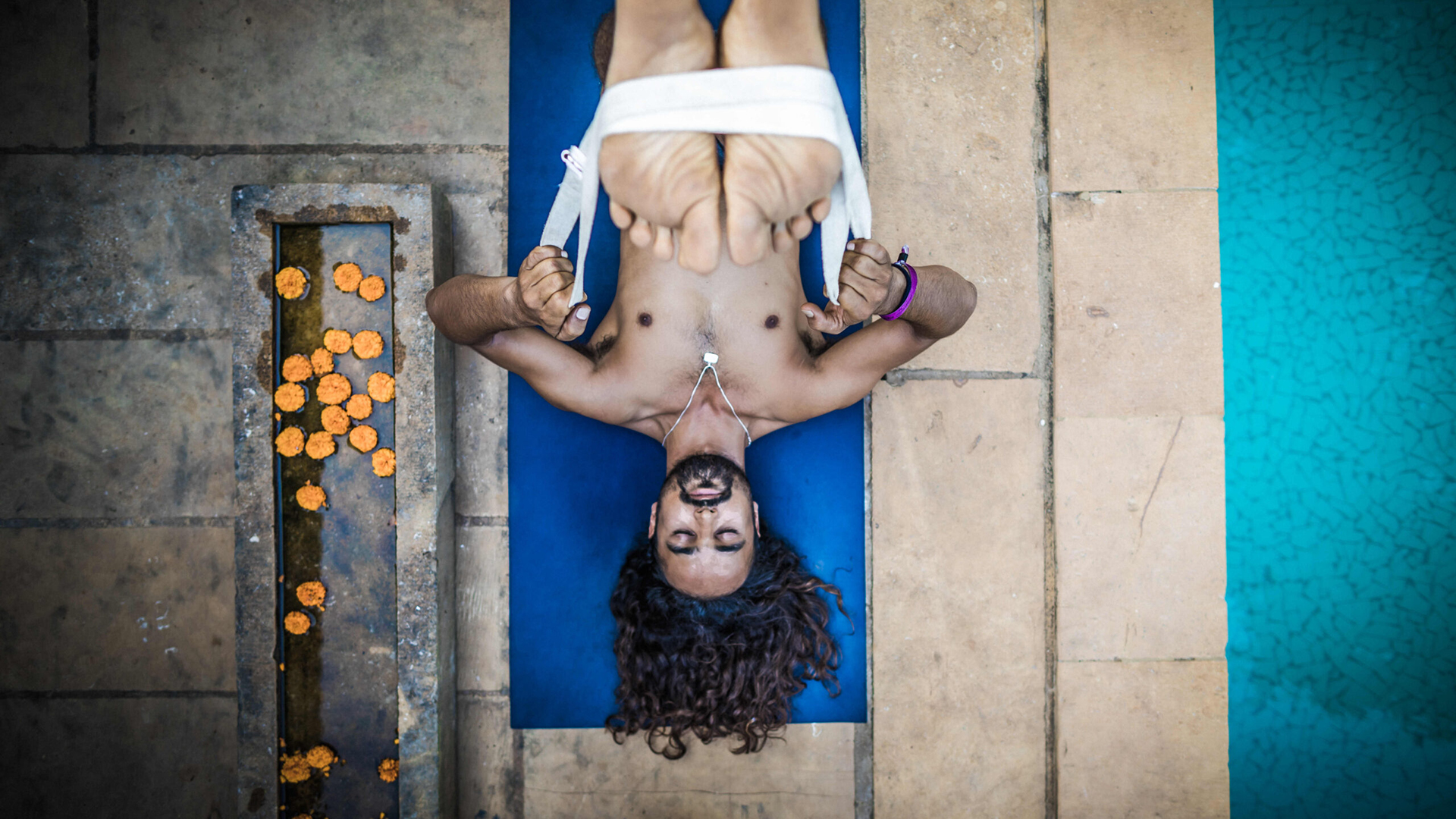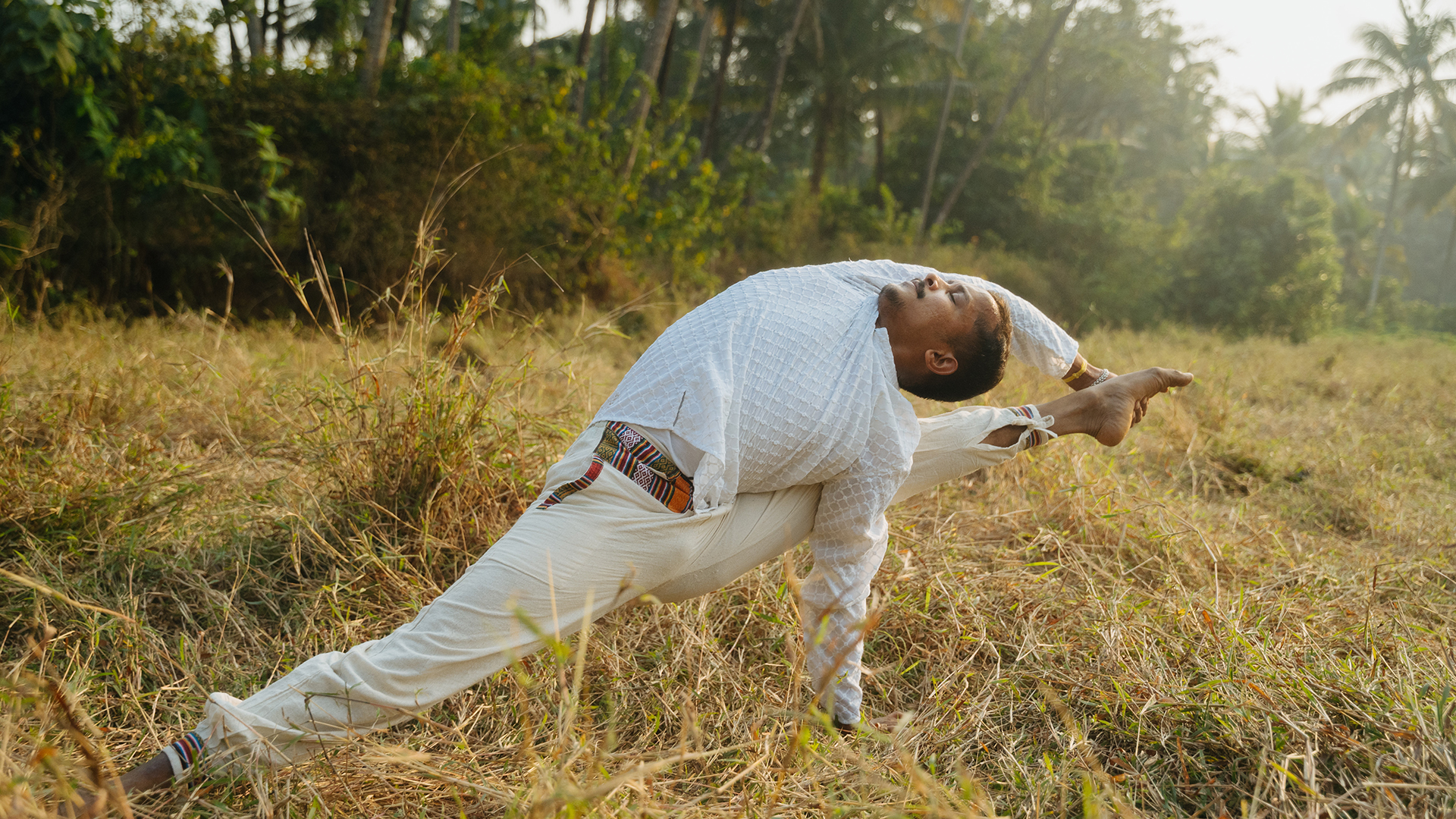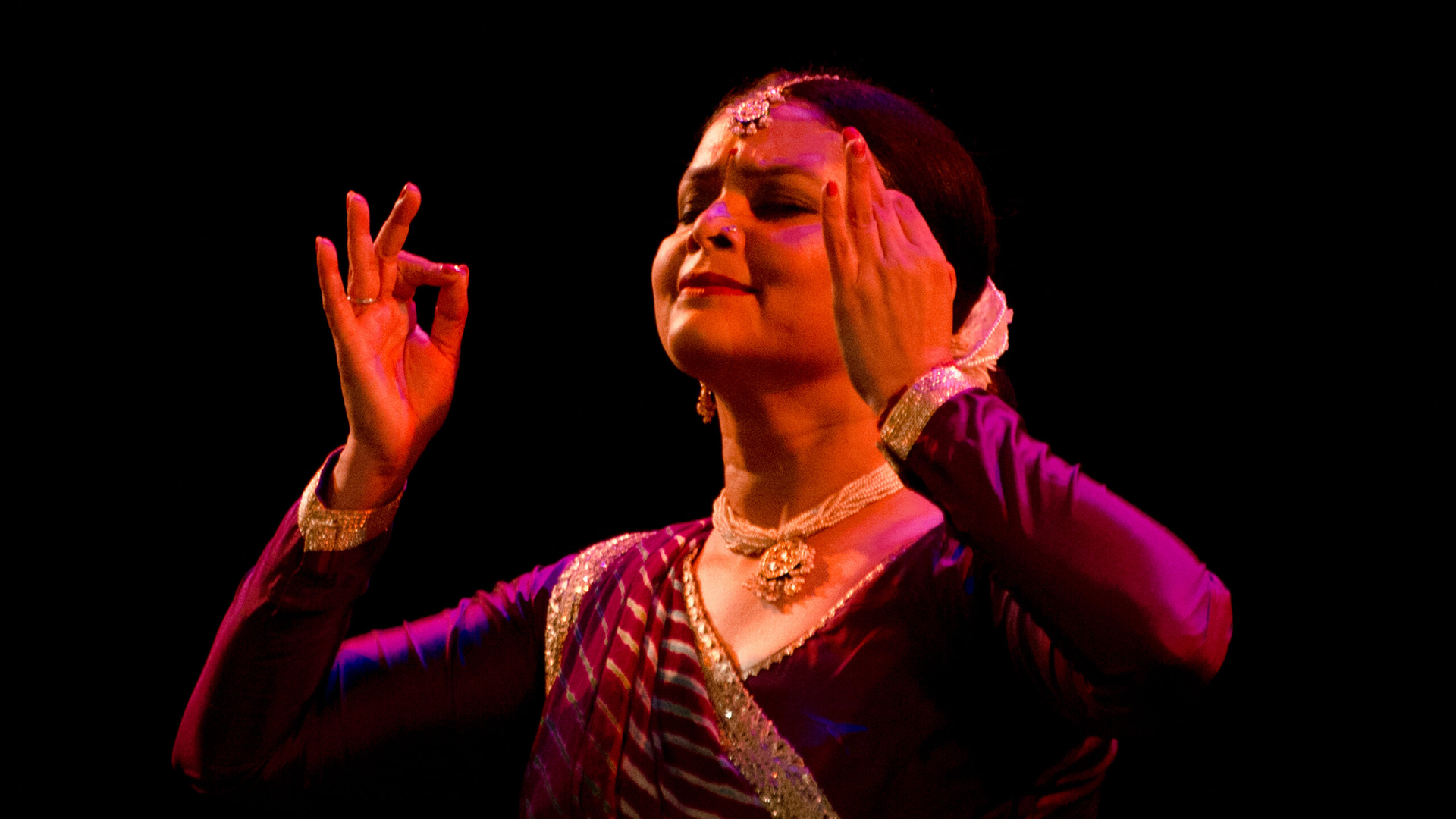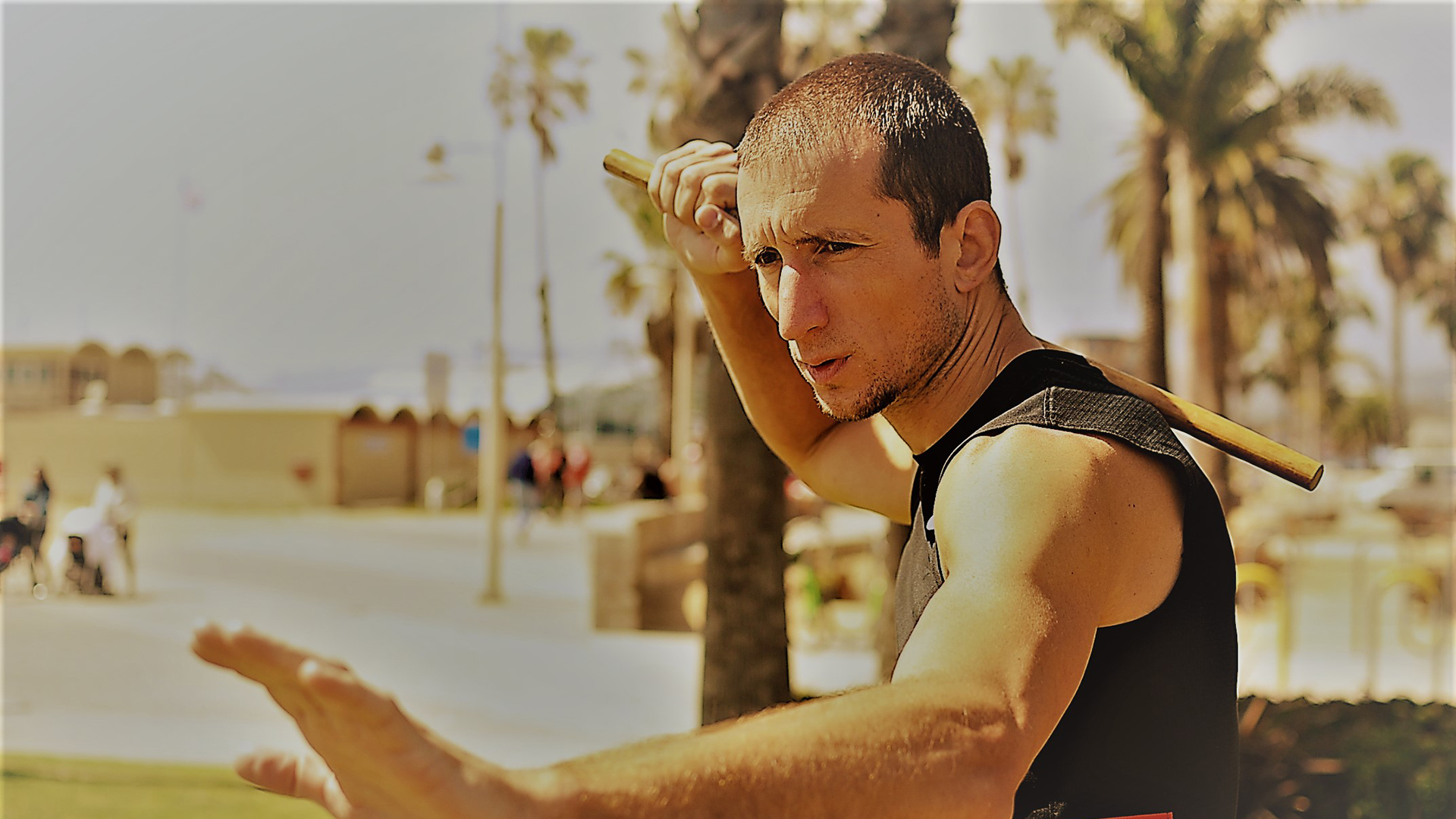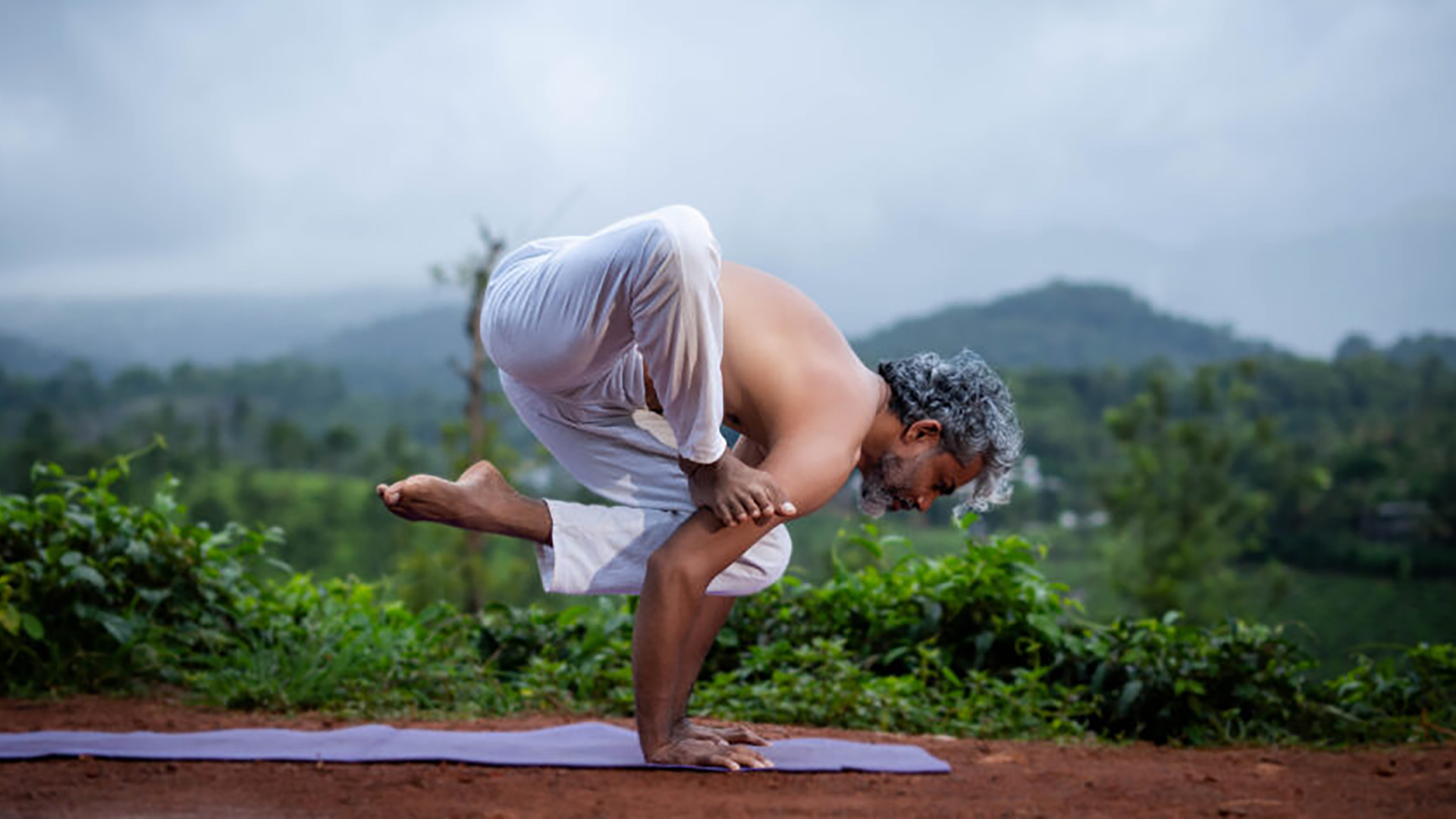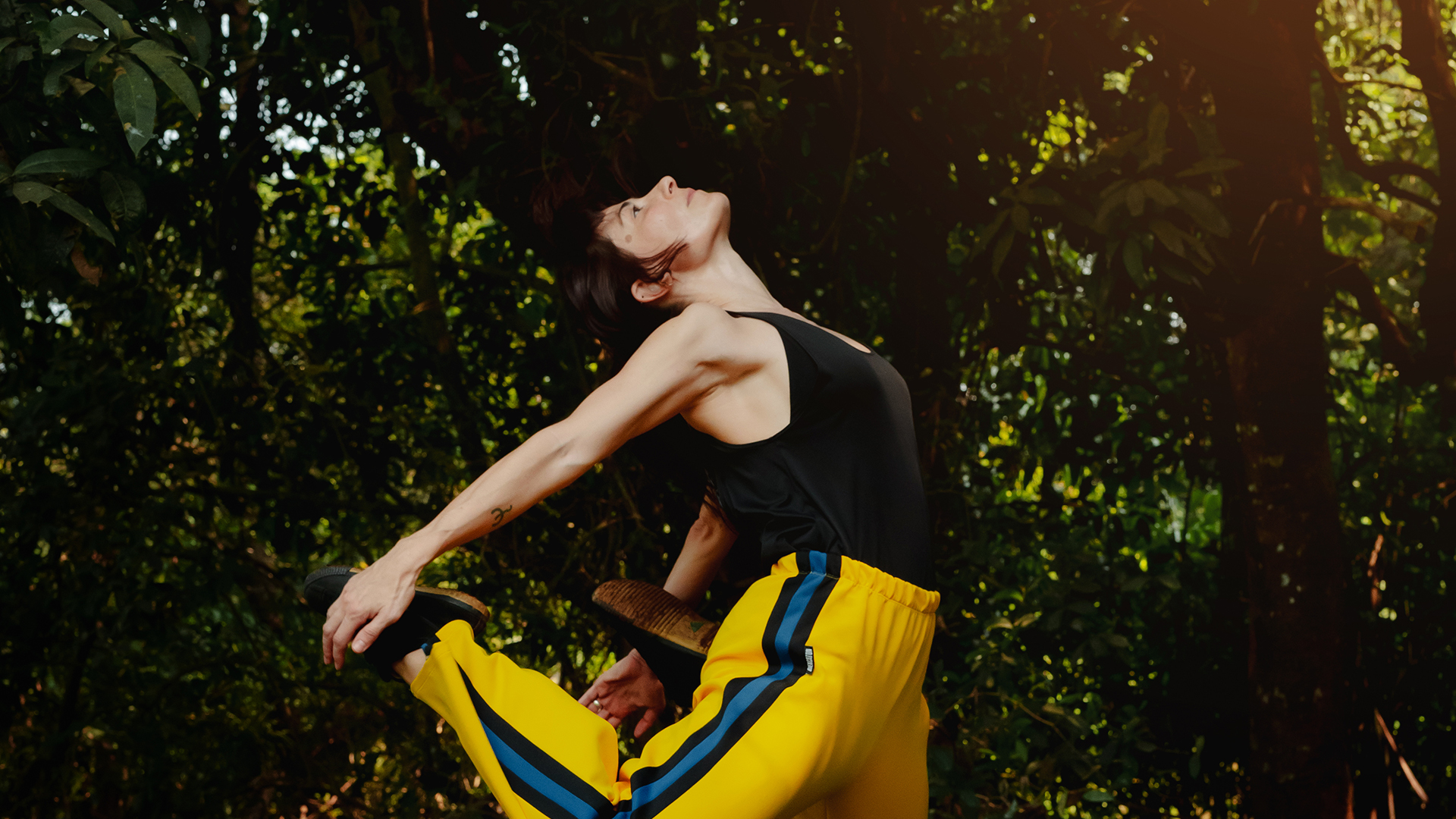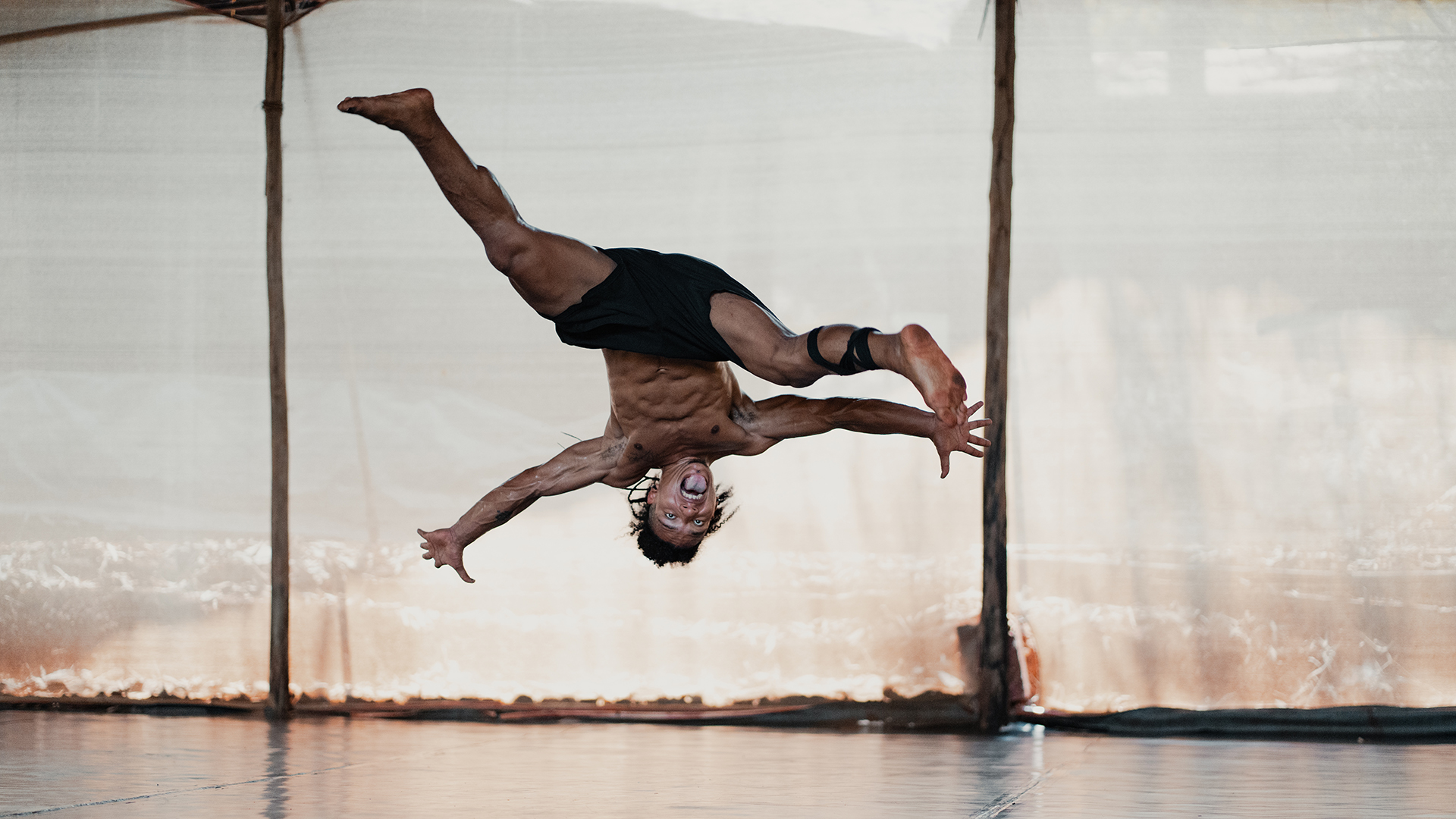Joy Karkera also known as Capitão is a movement artist and dedicated capoeirista whose path has always been guided by play, rhythm, and a curiosity for the body in motion. Growing up, he was always found outdoors—running, climbing, exploring, always moving. Football first captured his focus, and for years he played competitively across school, college, and club levels. Though he once dreamed of pursuing it professionally, the lack of support led him to step away—only to make space for something even more transformative.
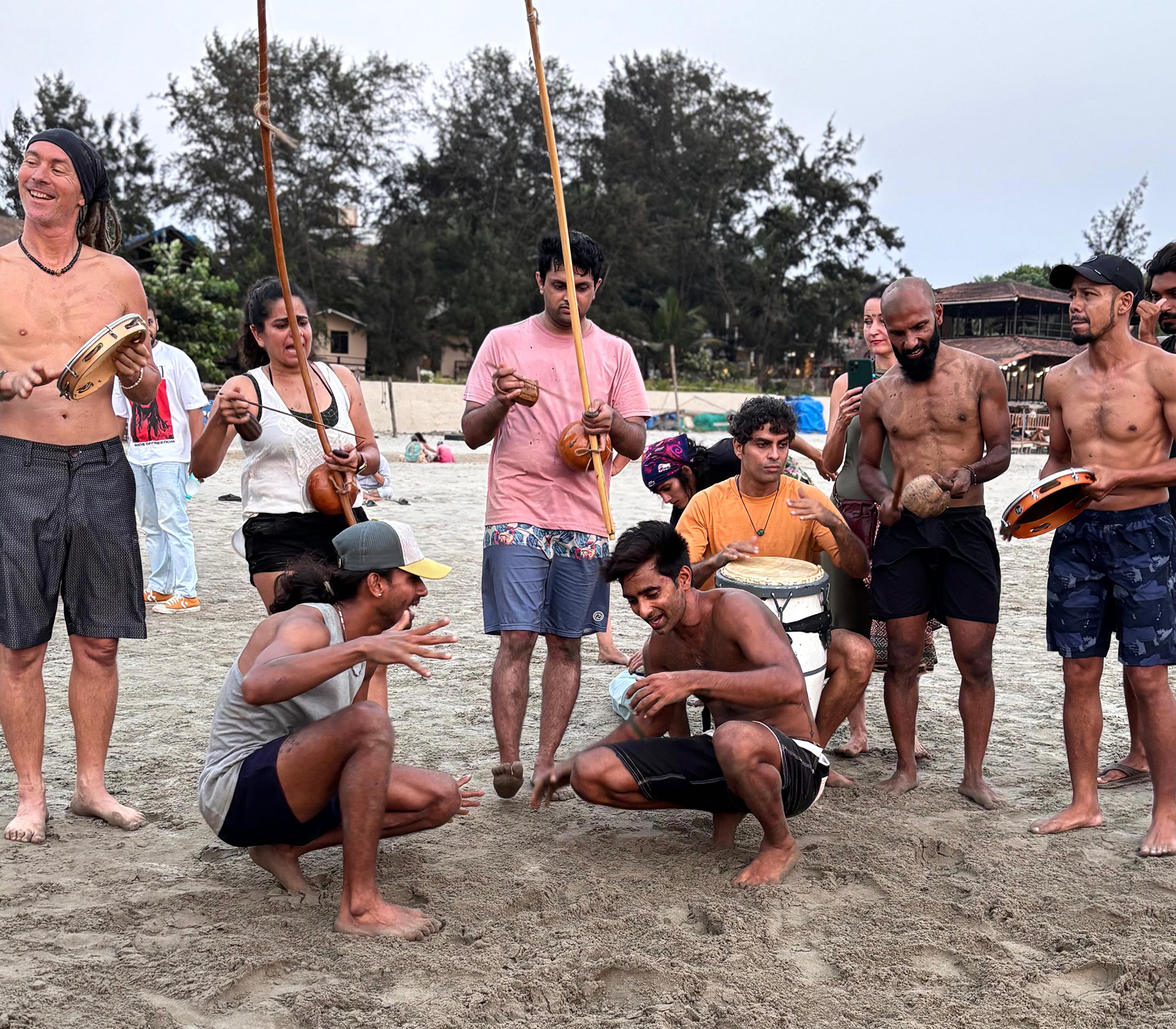
The first time Joy witnessed Capoeira, he felt something awaken. It was as if all the things he loved—music, martial arts, acrobatics, rhythm, community—were woven into one living, breathing art form. A week later, he began training, and never looked back. What started as a passion quickly became a path. He devoted himself fully, training daily, teaching across schools and studios, performing, and creating workshops, fuelled by a deep sense of purpose.
His teacher, Prof. Baba of the Centre for Capoeira India, became a vital mentor and source of inspiration—nurturing Capitão’s development as a teacher and helping him find his voice in the art. With the Centre, Capitão helped bring Capoeira into school curriculums, hosted international masters, and mentored a new generation of teachers. Along the way, the art opened doorways he hadn’t imagined—building physical and mental strength, sharpening awareness, and offering life lessons through challenge and practice.
His journey continues to unfold into other passions—surfing, wakeboarding, snowboarding, skateboarding, percussion, and collaborative music-making. Nature, animals, adrenaline, and rhythm keep him alive and inspired. Music, in particular, is his daily companion—”right up there, next to oxygen.”
For Capitão, Capoeira is not just a movement practice, but a way of being. A path of freedom, resilience, and beauty.
“Every day, this art teaches me to live a beautiful, creative, uplifting life—and it’s this spirit that I aspire to share with others.”
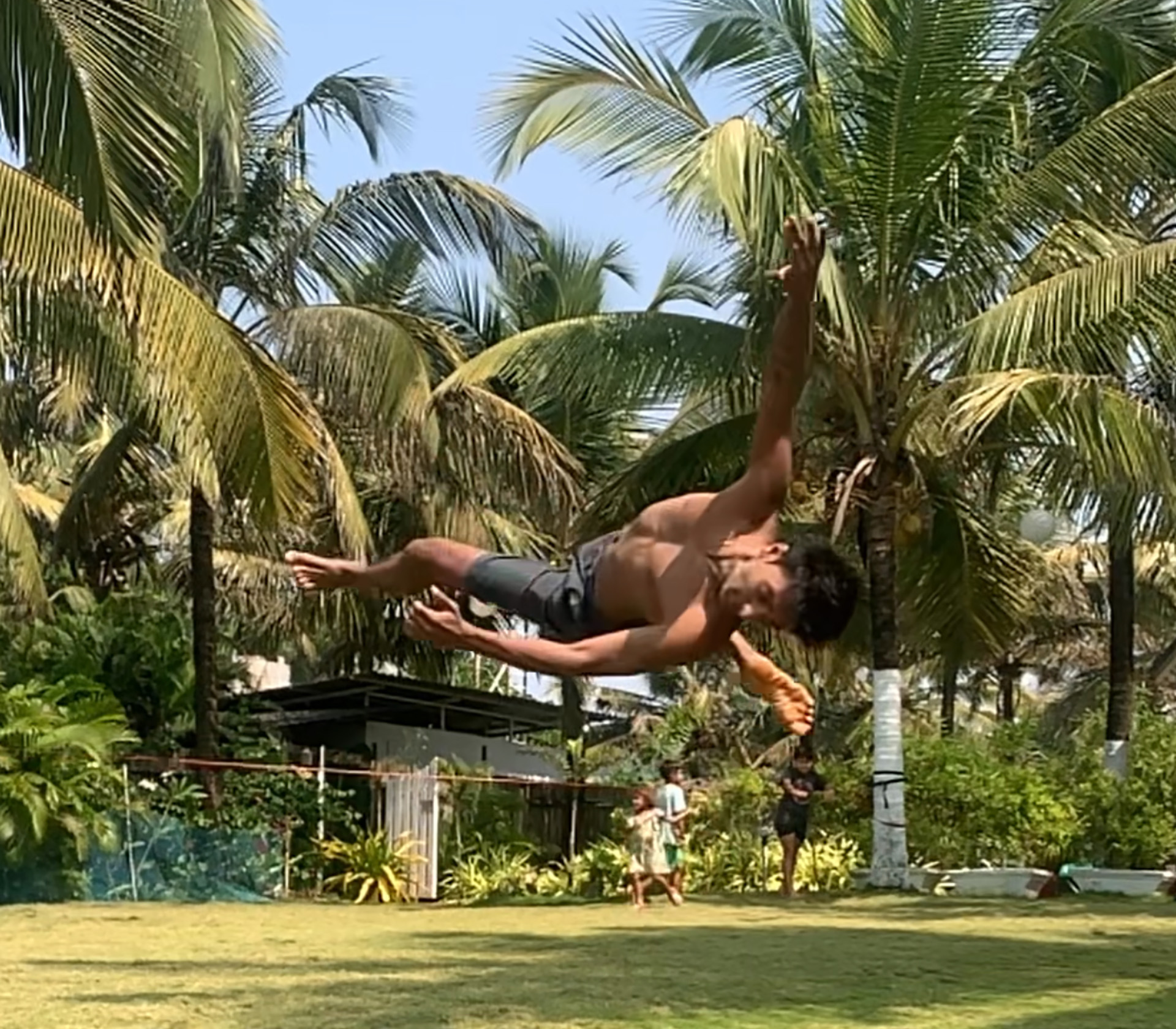
“Where movement meets music, resistance becomes rhythm, and the body becomes story”.
Capoeira is an Afro-Brazilian art form that blends dance, martial arts, music, and acrobatics into a powerful, fluid expression of resistance and community. Capoeira is not just as a technique, but as a living tradition—alive in its history, sound, and movement.
A Living History
Capoeira was born out of struggle and resilience. Enslaved Africans in Brazil developed it as a disguised martial art—masked within the fluidity of dance and the playfulness of ritual. There are two main styles that emerged over time:
- Capoeira Angola – the older, more grounded form, known for its low, slow movements, ritual richness, and cunning game. It evokes ancestral wisdom and plays close to the earth.
- Capoeira Regional – introduced by Mestre Bimba, this style brought faster, more upright movements, technical kicks, and introduced formal training systems. It is dynamic, direct, and rhythmically intense.
Contemporary capoeira styles today often blend both traditions—creating a rich, loop-flow of movements that combine agility, creativity, and dialogue.
The Role of Music
Music is inseparable from Capoeira. It drives the rhythm of the game, sets the mood, and defines the type of play. In every session, we learn the traditional songs, explore clapping patterns, and play instruments like the berimbau, pandeiro, and atabaque. The music holds memory—carrying the legacy of resistance and joy. It teaches timing, patience, and presence.
Movement Vocabulary
You will explore a wide spectrum of capoeira movements:
- Foundational Flow: Ginga (the basic sway), round kicks, straight kicks, dodges
- Grounded Work: floor sequences, soft acrobatics, and flowing transitions
- Partner Play: falling and takedown techniques and partner acrobatics
These movements are not taught in isolation—they’re woven together through play, improvisation, and interaction.
Roda – The Circle of Expression
The Roda is the heart of Capoeira. It is both arena and sanctuary—a circle where the game (jogo) is played through movement, music, and malicia (strategic cunning). Different types of games emerge:
- Angola – low and slow, teasing and grounded
- Regional – fast, upright, technical
- Contemporary – loop-flow, expressive and acrobatic
- Bimba-style – emphasizing throws, sweeps, and partner strategy
In each roda, players enter the circle to challenge, collaborate, and express themselves—always within the rhythm and ritual of the game.
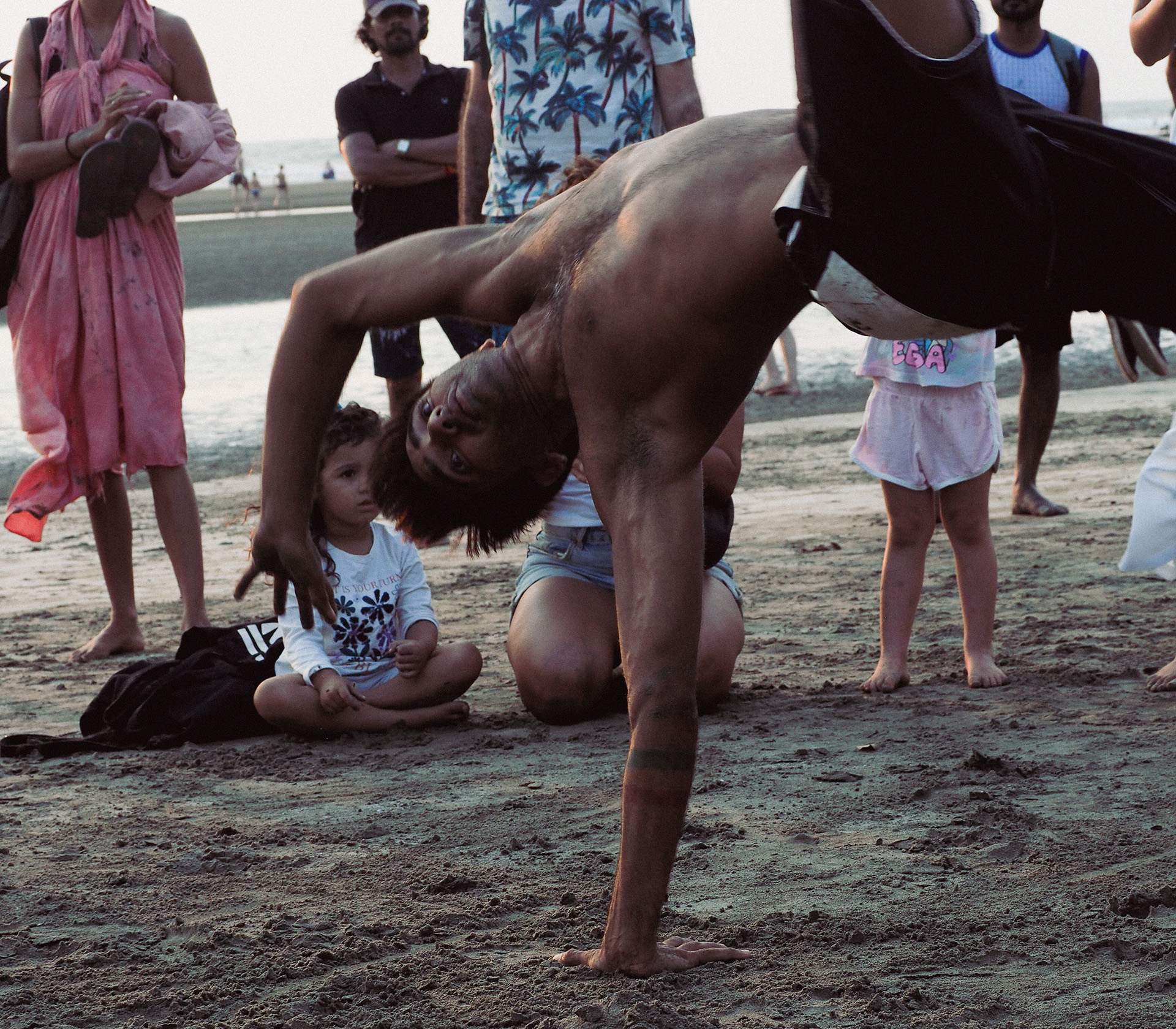
The Rhythmic Roots of Capoeira – Samba & Maculelê
Capoeira is deeply influenced by other Afro-Brazilian traditions like Samba and Maculelê. Samba, with its fast footwork, grounded sway, and vibrant energy, pulses through the heartbeat of Capoeira. Born in resistance and joy, and celebrated during Carnival through rich percussion and radiant movement, Samba brings fluidity, musical sensitivity, and expressive freedom to the game of Capoeira.
Maculelê, on the other hand, is the warrior’s dance—a fierce and rhythmic stick dance rooted in the strength of enslaved Africans who used movement and rhythm to train in secret. With sharp strikes, syncopated footwork, and powerful drumming, Maculelê builds coordination, timing, and presence. It echoes in Capoeira’s takedowns, its floorwork, and in the way players move to the beat of the berimbau like dancers to the atabaque.
These forms are living threads woven into Capoeira’s fabric. Together, they teach us how to move with joy and precision, how to listen deeply, and how to embody rhythm as resistance.
Course Structure
Over 10 sessions, we will immerse ourselves in the diverse landscape of Capoeira:
- 2 sessions – Maculelê, the rhythmic warrior dance of sticks and drums
- 5 sessions – Capoeira explorations:
- Angola
- Regional
- Fight game
- Contemporary flow
- Acrobatics
- 1 session – Samba, the joyful Afro-Brazilian dance form that pulses through capoeira’s music
- 2 sessions – Roda practice, where we bring it all together in the circle
Capoeira is more than movement—it is a path to empowerment, creativity, and community. Whether you’re a dancer, martial artist, or beginner mover, you’ll find space here to explore this vibrant tradition with respect, joy, and play.
